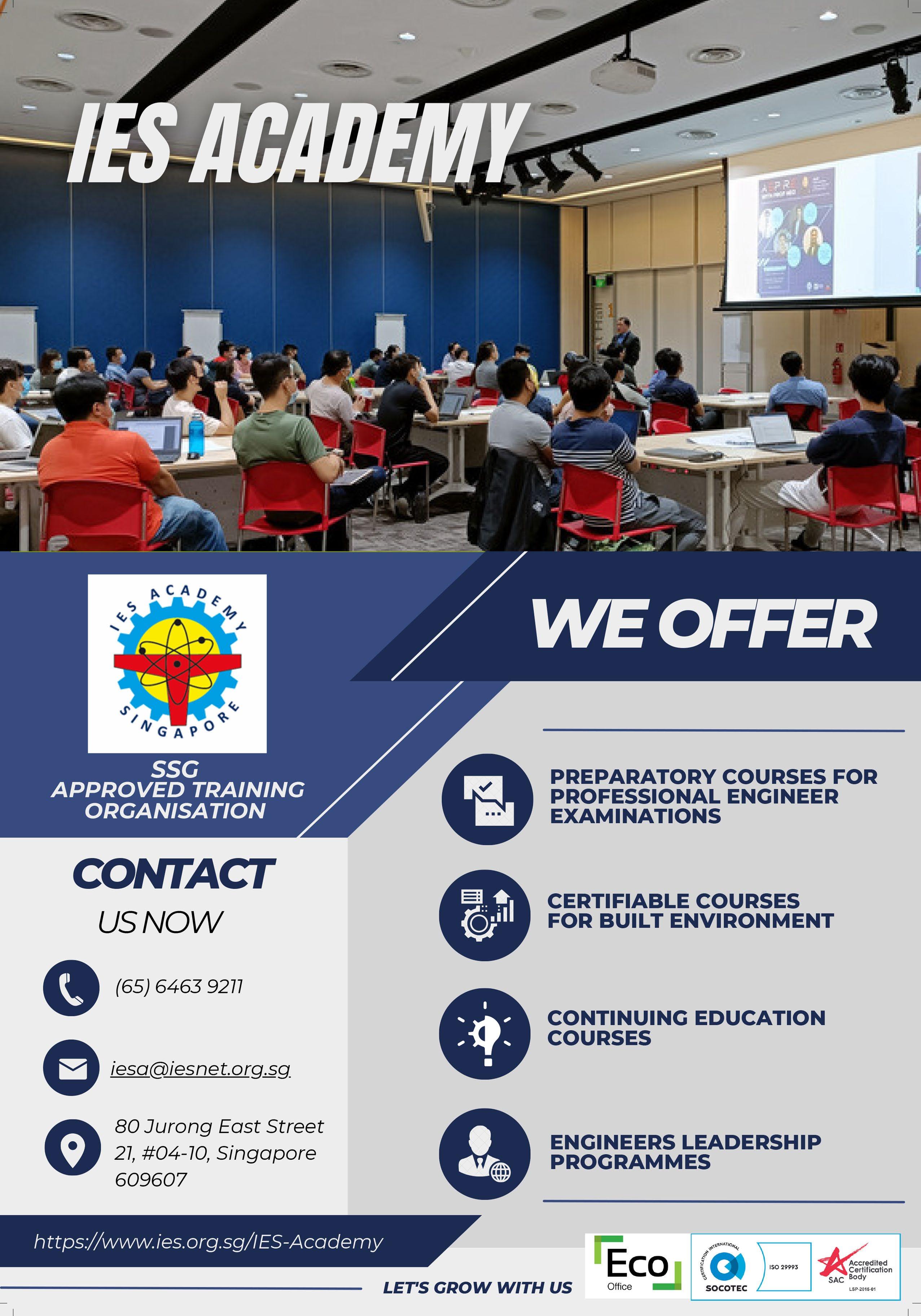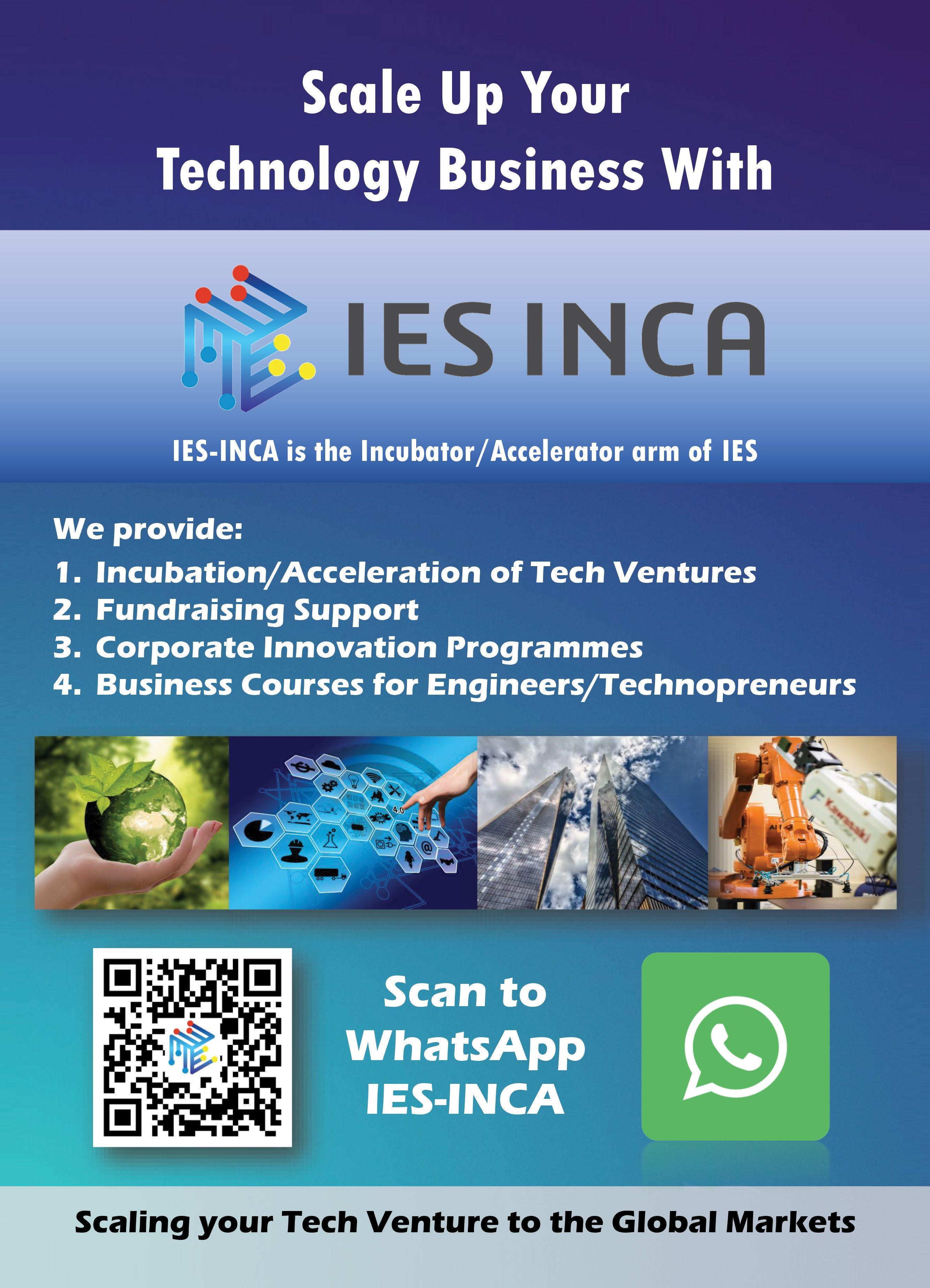


















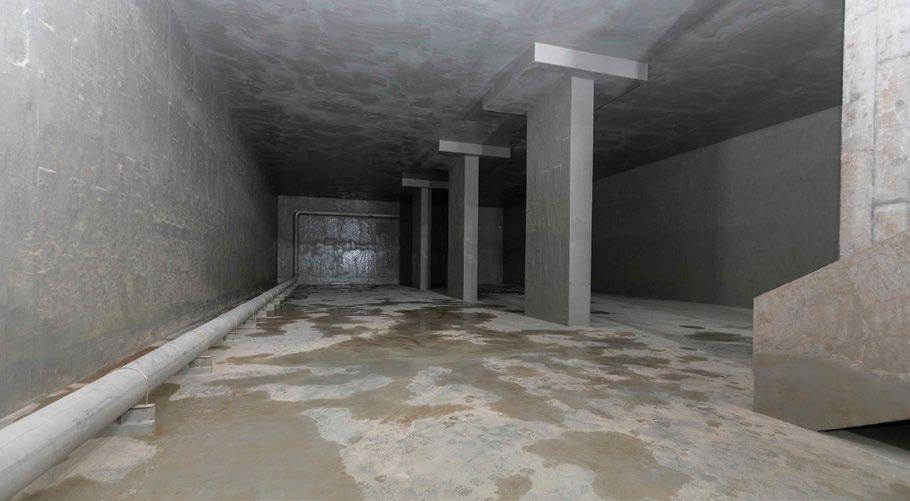
12 Enhancing the efficiency of cooling systems in
AHR Expo
Cooling-as-a-Service
18 Large-capacity chillers for commercial applications 19 ASHRAE and World Filtration Institute sign MoU 20 Technologies to support climate change mitigation and healthy buildings CYBERSECURITY
22 Foundational cybersecurity courses for engineering professionals
24 The next major digital threat – AI-fuelled identity attacks

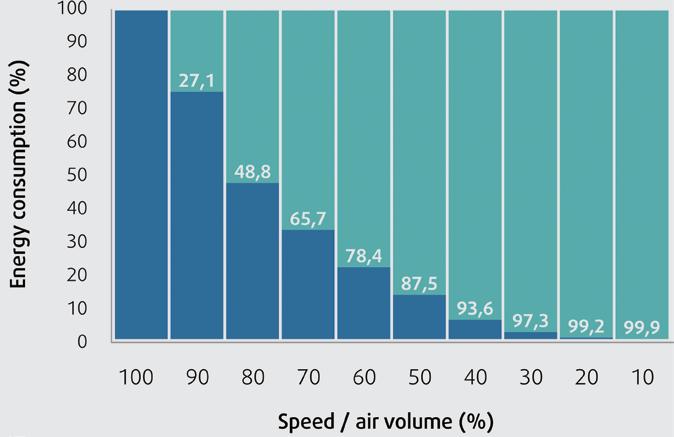
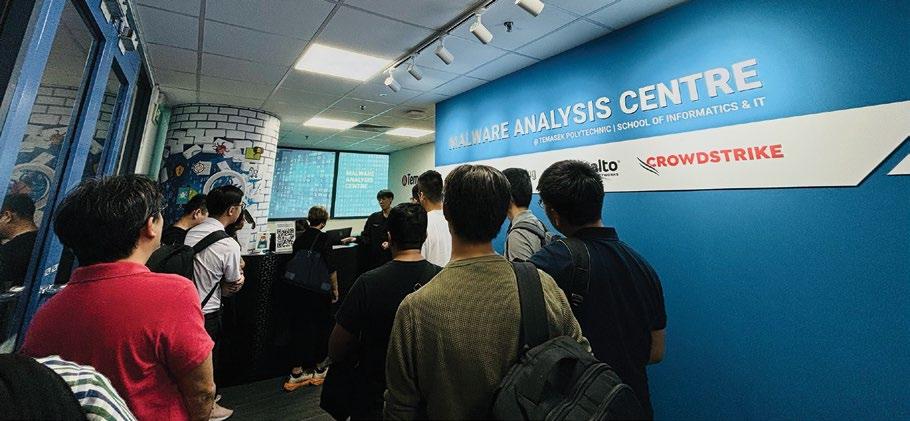

Our EC fans are your first choice when it comes to the economical use of energy and simple demand controlled ventilation.
These fans are driven by energy-saving EC motors with built in electronic control to keep them running in the optimal operating range.


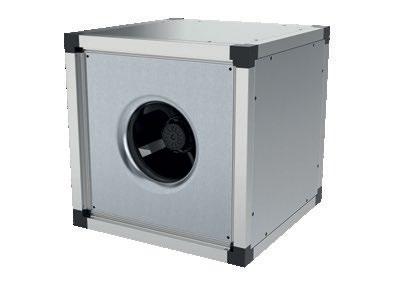
✓ Less energy use, resulting in lower energy costs and lower CO2 emissions
✓ Easy to control and adjust ventilation rate to actual need
✓ Low sound level throughout the entire fan performance
✓ All control and protection electronics are integrated in the motor
EC-Basic controllers are specially designed to meet simple control requirements when using EC fans.
✓ Simple to connect, install and set up
✓ Economical and affordable demand control
✓ Designed with sensors to measure current conditions, enabling the fans to automatically slow down when there is less demand
to Fit Any Project:
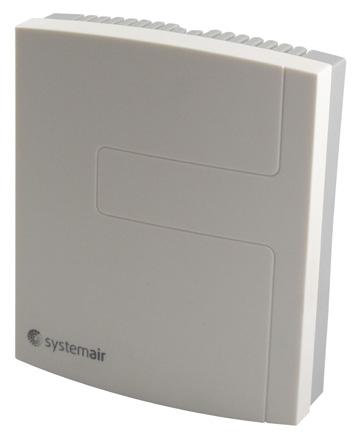

26 Bringing work into the classroom – ill-structured problems and transfer of learning through computer simulations
30 Gaining transformative insights and strengthening global alliances
33 Coastal protection and flood resilience theme in SIWW 2024 garners interest and active participation
34 Tackling global water issues
36 JTC sets up Decarbonisation Living Lab at Jurong Innovation District
38 Enhancing the efficiency and sustainability of eight venues at Paris Olympics 2024
Modernising the power assets of a large steel plant
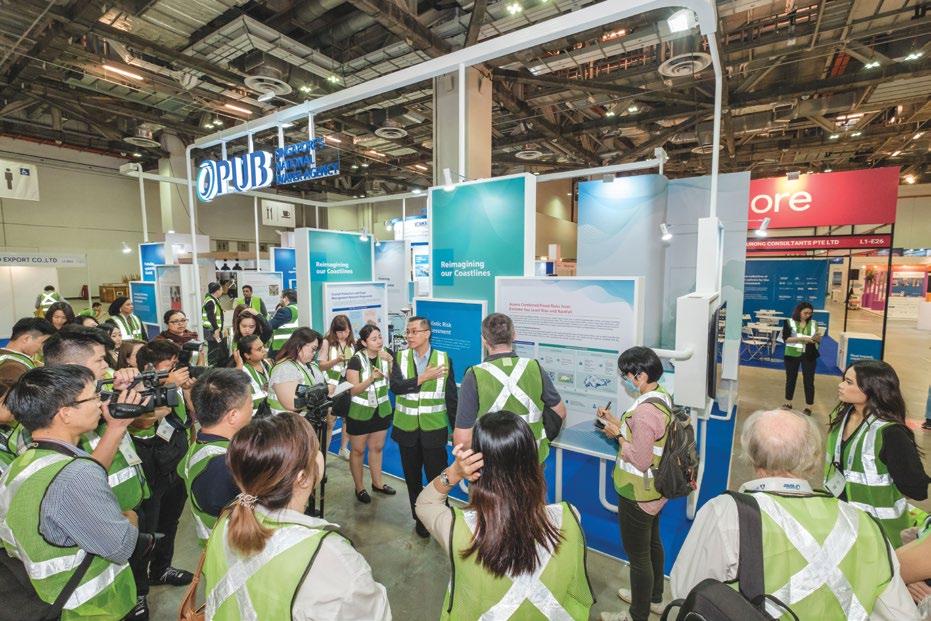
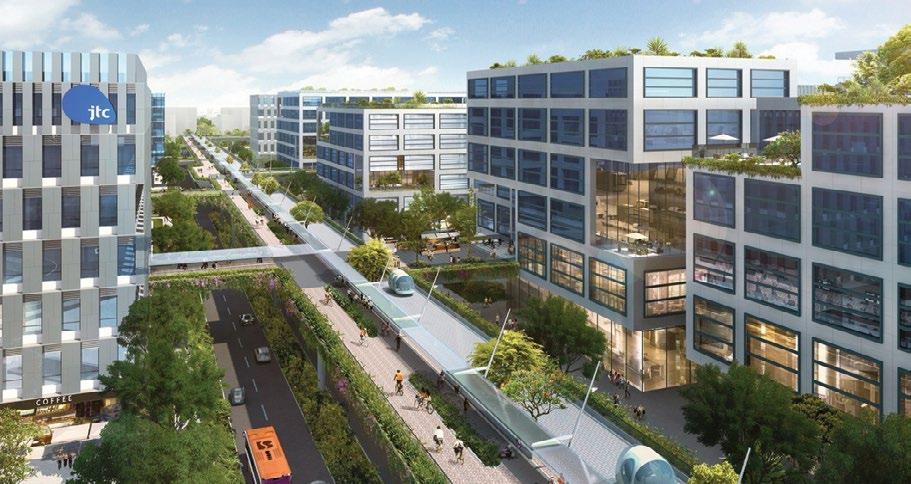
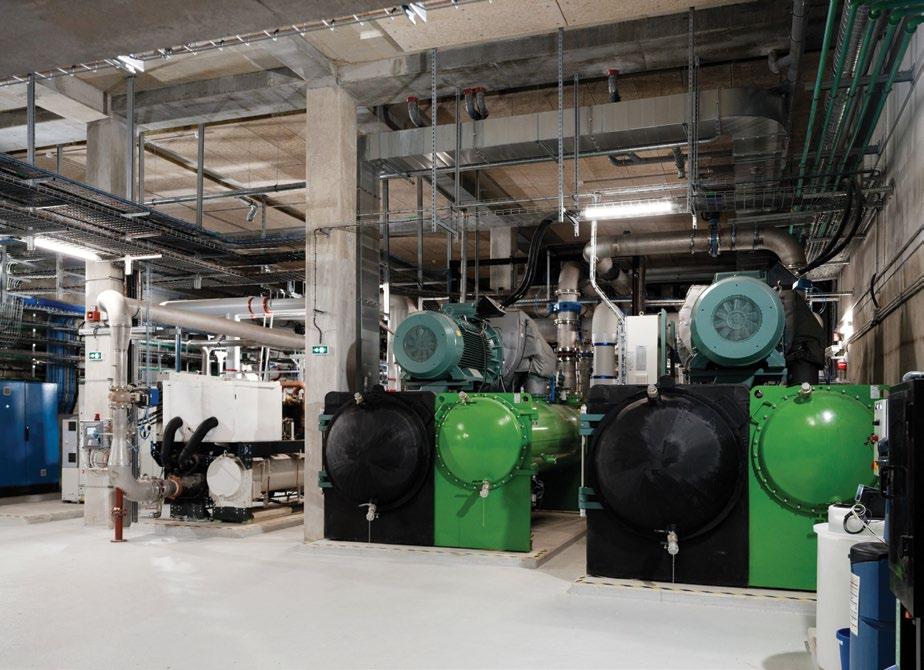
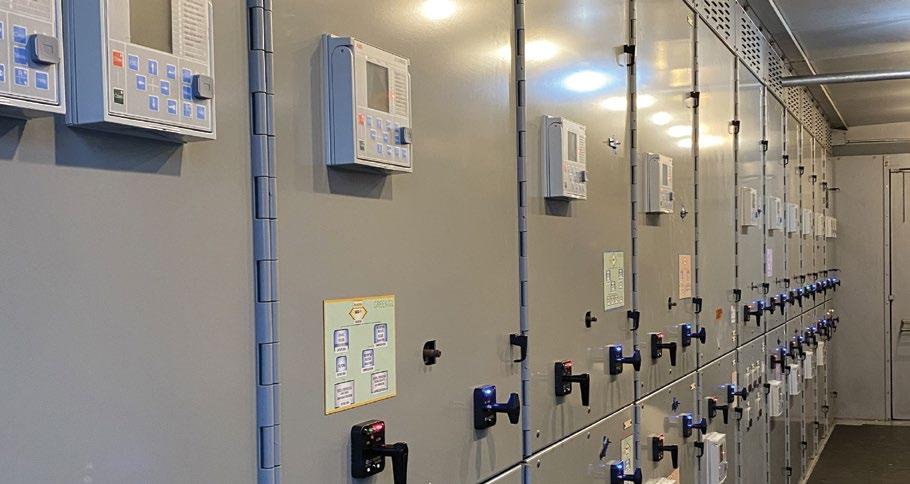
contributions are welcome but their inclusion in the
Get the most from your Air filters (AHU). Changing them according to differential pressure drop will reduce energy consumption and CO2 annually by up to 25 000+ Tonnes*.


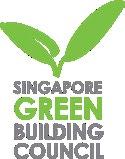
Four new events will be added to the line-up for Singapore International Energy Week (SIEW) 2024, which will be held at the Sands Expo and Convention Centre, Marina Bay Sands, Singapore, from 21 to 25 October 2024.
SIEW 2024 will address how stakeholders and countries can collaborate towards creating ‘A Connected and Sustainable Energy World’.
The 17th edition of SIEW is set to welcome over 16,000 industry captains, policy makers and academic experts, to debate on pressing energy issues facing the world today.
The four new events at SIEW 2024 are:
• Scaling The Hydrogen Economies in Asia: Co-organised by the Energy Market Authority (EMA) and the United States Department of Commerce, the inaugural event will discuss the technical and commercial feasibility of hydrogen, through
research and development, as well as financing structures, to facilitate hydrogen deployment in Asia.
• Asia Carbon Summit: The event will be held, as part of the Asia Clean Energy Summit, to discuss ‘Navigating the Complexities of Carbon Markets in Asia’.
Asia Carbon Summit will bring together thought leaders for crucial discussions on the rapidly evolving carbon markets and development of tradeable carbon reductions, as well as its removal.
• Ammonia & Carbon Capture Asia (ACCA): The event will feature discussions on the latest advancements in ammonia production; hydrogen utilisation; and carbon capture, utilisation and storage.
• Future Energy Masterclasses: The masterclasses, organised by S&P Global Commodity Insights, will offer specialised training sessions led by its market experts, on topics across hydrogen, low carbon and renewables markets.
Participants can also join in SIEW’s signature events led by the EMA, including the SIEW Summit, the Singapore-International Energy Agency (IEA) Ministerial Forum, and the 4th Singapore-International Renewable Energy Agency (IRENA) High-Level Forum.
Besides EMA-led events, SIEW industry events will feature conferences and exhibitions on key global and regional energy trends.
These include the Asia Clean Energy Summit, the Asian Downstream Summit (ADS) and Asian Refinery Technology Conference (ARTC), the Asia Gas Markets Conference, the Future of the Grid event which will also host the 2nd ASEAN Energy Regulatory Forum, and the 25th Association of the Electricity Supply Industry of East Asia and Western Pacific CEO Conference (a by-invitation conference).

Event Date: 23 - 24 October 2024
Venue: Sands Expo & Convention Centre, Singapore
Theme: Advancing Sustainable Energy Solutions in Asian Petrochemicals and Refining Industries
The Asian Downstream Summit (ADS) serves as Asia’s most influential downstream oil and gas event, uniting senior industry leaders and decision-makers from across the value chain to address pressing in-
dustry challenges.
Co-hosted with the Asian Refining Technology Conference (ARTC) and the new Ammonia & Carbon Capture Asia (ACCA) conference, this year's focus is on advancing sustainable energy solutions in Asian petrochemical and refining industries.
The accompanying expo is a key feature, facilitating networking and knowledge exchange among over 1,200 decision-makers, including top refiners, petrochemical play-
ers, technology experts and government officials. Discussions will centre on optimising efficiency, increasing margins and achieving operational excellence in oil & gas, through technology enablement.
ADS, ARTC and ACCA aim to provide niche and high-level conferences and expo components, attracting delegates seeking the latest technologies and opportunities for collaboration.
Register here to get your conference delegate ticket: bit.ly/4cRIpDF or scan the following QR code:

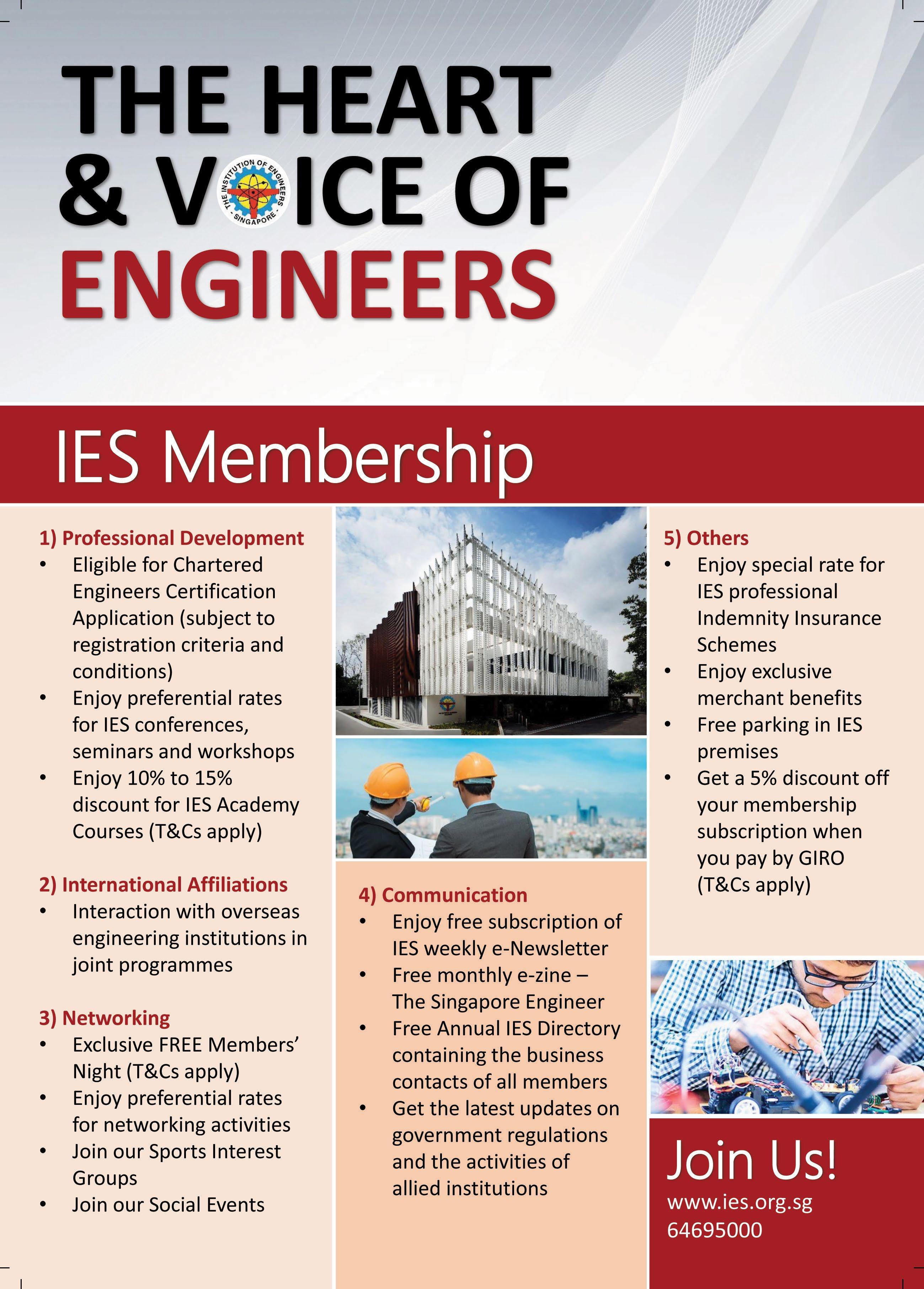
TEMBUSU Asia Consulting (TAC) has become the first Validation and Verification Body (VVB) in Singapore to be accredited by Asia Carbon Institute (ACI) for verification of carbon credits.
This move reinforces TAC’s expertise in driving the regional carbon trading market, alongside ACI, and will catalyse the generation and issuance of high-quality carbon credits to meet the increasing market demand in Asia.
The World Economic Forum projects that Asia’s green economy will play a transformative role globally in the next decade, with its market for green businesses expected to reach between USD 4 to 5 trillion by 2030. In 2023, Asia led the way, in terms of carbon credit transaction volume, in the voluntary carbon market.
Meanwhile, carbon credits from engineered projects overtook nature-based credits in 2023. With a special focus on engineered projects, such as technology-based and urban-related carbon reduction and removal solutions, ACI provides greenhouse gas mitigation project proponents in Asia an alternative standard that is closer to home, for credit registration.
TAC will offer its technical expertise and regional knowledge to verify the integrity of the carbon credits, based on relevant standards. Pooling their networks together, ACI and TAC are expected to expand their reach and assist more Asian players to participate in the emerging Asia carbon market.
TAC has played an important role in driving the decarbonisation efforts of Singapore corporations, through the provision of greenhouse gas validation and verification services. The services offered by TAC ranges from assistance towards the obtainment of sustainability-linked loans and resource efficiency grants to
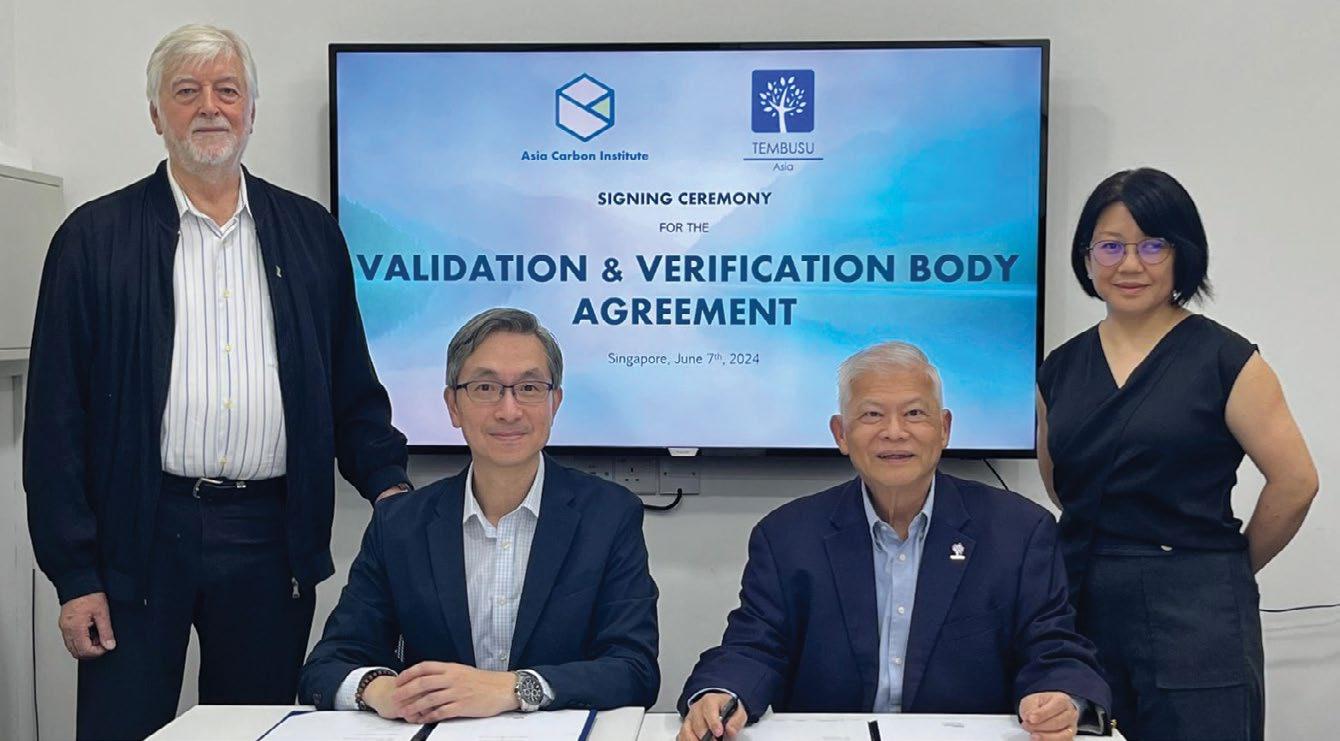
verification under Singapore’s Carbon Pricing Act.
Supported by Enterprise Singapore, TAC has deepened its capabilities and was accredited by the Singapore Accreditation Council (SAC) for its greenhouse gas verification competencies.
This provided greater assurance that TAC’s verification process is aligned to international standards and has opened doors for TAC to access new opportunities in the carbon services space.
To-date, TAC has verified over 9.16 million tonnes of greenhouse gas emissions for various industries. With ACI’s accreditation, TAC can support project developers from Asia in fuelling Asia’s decarbonisation agenda.
As carbon taxes and the Emission Trading System in Asia mature, the demand and value of carbon credits are anticipated to rise in the near future.
This timely accreditation by ACI enables TAC to verify the additionality and verifiability of carbon credits from the energy, manufacturing and chemical industries to the mining, waste, and afforestation and refor-
estation sectors, giving Asia’s greenhouse gas mitigation project proponents more access to register their carbon credits.
TEMBUSU Asia Consulting (TAC) began operations in July 2018 and has been accredited by the National Environmental Agency (NEA) to conduct greenhouse gas emissions verification, under the Carbon Pricing Act, since 2019. In 2023, the company was accredited by the Singapore Accreditation Council as a validation and verification body.
With ACI’s accreditation, TAC is poised to verify carbon credits registered under the ACI program.
Asia Carbon Institute
Asia Carbon Institute (ACI) is a non-profit organisation dedicated to fostering sustainable climate action throughout Asia and beyond.
As a voluntary carbon credit standards body and registry, ACI focuses on developing and implementing climate-positive initiatives and tailored solutions to address the unique environmental challenges and opportunities in Asia.
Fortinet, a global cybersecurity leader, recently announced the release of the FortiGuard Labs 2H 2023 Global Threat Landscape Report.
The latest semi-annual report is a snapshot of the active threat landscape and highlights trends from July to December 2023, including analysis on the speed with which cyber attackers are capitalising on newly identified exploits from across the cybersecurity industry and the rise of targeted ransomware and wiper activity against the industrial and OT sector.
Key findings from the second half of 2023 include the following:
• Attacks started on average 4.76 days after new exploits were publicly disclosed: FortiGuard Labs sought to determine how long it takes for a vulnerability to move from initial release to exploitation, whether vulnerabilities with a high Exploit Prediction Scoring System (EPSS) score get exploited faster, and whether it could predict the average time-to-exploitation using EPSS data.
Based on this analysis, the second half of 2023 saw attackers increase the speed with which they capitalised on newly publicised vulnerabilities (43% faster than 1H 2023).
This highlights the need for vendors to dedicate themselves to internally discovering vulnerabilities and developing a patch before exploitation can occur. It also reinforces the fact that vendors must proactively and transparently disclose vulnerabilities to customers to ensure they have the information needed to effectively protect their assets before cyber adversaries can exploit N-day vulnerabilities.
• Some N-Day vulnerabilities remain unpatched for 15+ years: It is not just newly identified vulnerabilities that CISOs and security teams must worry about. Fortinet telemetry found that 41% of organisations detected exploits from signatures
less than one month old and nearly every organisation (98%) detected N-Day vulnerabilities that have existed for at least five years.
FortiGuard Labs also continues to observe threat actors exploiting vulnerabilities that are more than 15 years old, reinforcing the need to remain vigilant about security hygiene, and continues to prompt organisations to act quickly through a consistent patching and updating program, employing best practices and guidance from organisations, such as the Network Resilience Coalition, to improve the overall security of networks.
• Less than 9% of all known endpoint vulnerabilities were targeted by attacks: In 2022, FortiGuard Labs introduced the concept of the ‘red zone’ which helps readers better understand how likely it is that threat actors will exploit specific vulnerabilities.
To illustrate this point, the last three Global Threat Landscape Reports have looked at the total number of vulnerabilities targeting endpoints. In 2H 2023, research found that 0.7% of all common vulnerabilities and exposures (CVEs) observed on endpoints are actually under attack, revealing a much smaller active attack surface for security teams to focus on and prioritise remediation efforts.
• 44% of all ransomware and wiper samples targeted the industrial sectors: Across all of Fortinet’s sensors, ransomware detections dropped by 70% compared to the first half of 2023. The observed slowdown in ransomware over the last year can best be attributed to attackers shifting away from the traditional ‘spray and pray’ strategy to more of a targeted approach, aimed largely at the energy, healthcare, manufacturing, transportation and logistics, and automotive industries.
• Botnets showed incredible resiliency, taking on average 85 days for
command and control (C2) communications to cease after first detection: While bot traffic remained steady relative to the first half of 2023, FortiGuard Labs continued to see the more prominent botnets of the last few years, but three new botnets emerged in the second half of 2023.
• 38 of the 143 advanced persistent threat (APT) groups listed by MITRE were observed to be active during 2H 2023: FortiRecon, Fortinet’s digital risk protection service, intelligence indicates that 38 of the 143 Groups that MITRE tracks were active in 2H 2023.
Given the targeted nature and relatively short-lived campaigns of APT and nation-state cyber groups compared to the long life and drawn-out campaigns of cybercriminals, the evolution and volume of activity in this area is something FortiGuard Labs will continue to track.
Dark web discourse
The 2H 2023 Global Threat Landscape Report also includes findings from FortiRecon, which give a glimpse into the discourse between threat actors on dark web forums, marketplaces, Telegram channels, and other sources.
With the attack surface constantly expanding and an industrywide cybersecurity skills shortage, it is more challenging than ever for businesses to properly manage complex infrastructure composed of disparate solutions.
It is constant technology innovation and collaboration across industries and working groups, such as Cyber Threat Alliance, Network Resilience Coalition, Interpol, the World Economic Forum (WEF) Partnership Against Cybercrime, and WEF Cybercrime Atlas, that will collectively improve protection and aid in the fight against cybercrime, globally.
Meeting water demand while optimising space utilisation.
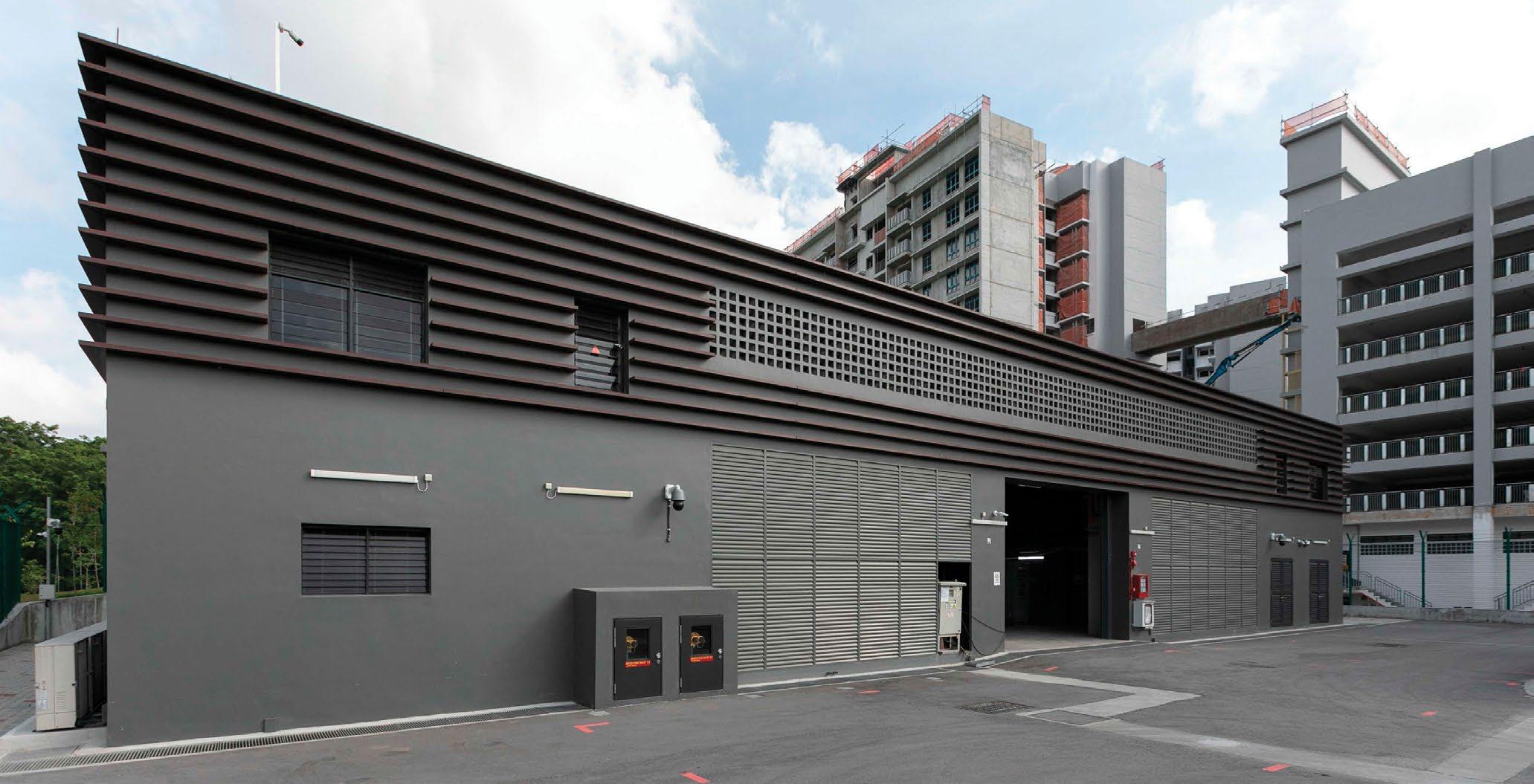
With Singapore’s water demand projected to nearly double by 2065, the country’s water supply infrastructure, including its treatment plants, service reservoirs and supply pipelines, will require continual investment and expansion.
In land-scarce Singapore, an innovative planning approach is also needed to overcome space constraints and ensure the resiliency of the water system.
The new Bidadari estate houses Singapore’s first Underground Service Reservoir (USR) built on low ground. The Bidadari USR was planned as a project to test the concept of a USR within a new housing estate, that will enhance the water pressure of the pipeline network and manage peak hour water demand.
Comprising a pumping station and two water tanks, with the capacity to hold a combined equivalent of three Olympic-sized swimming
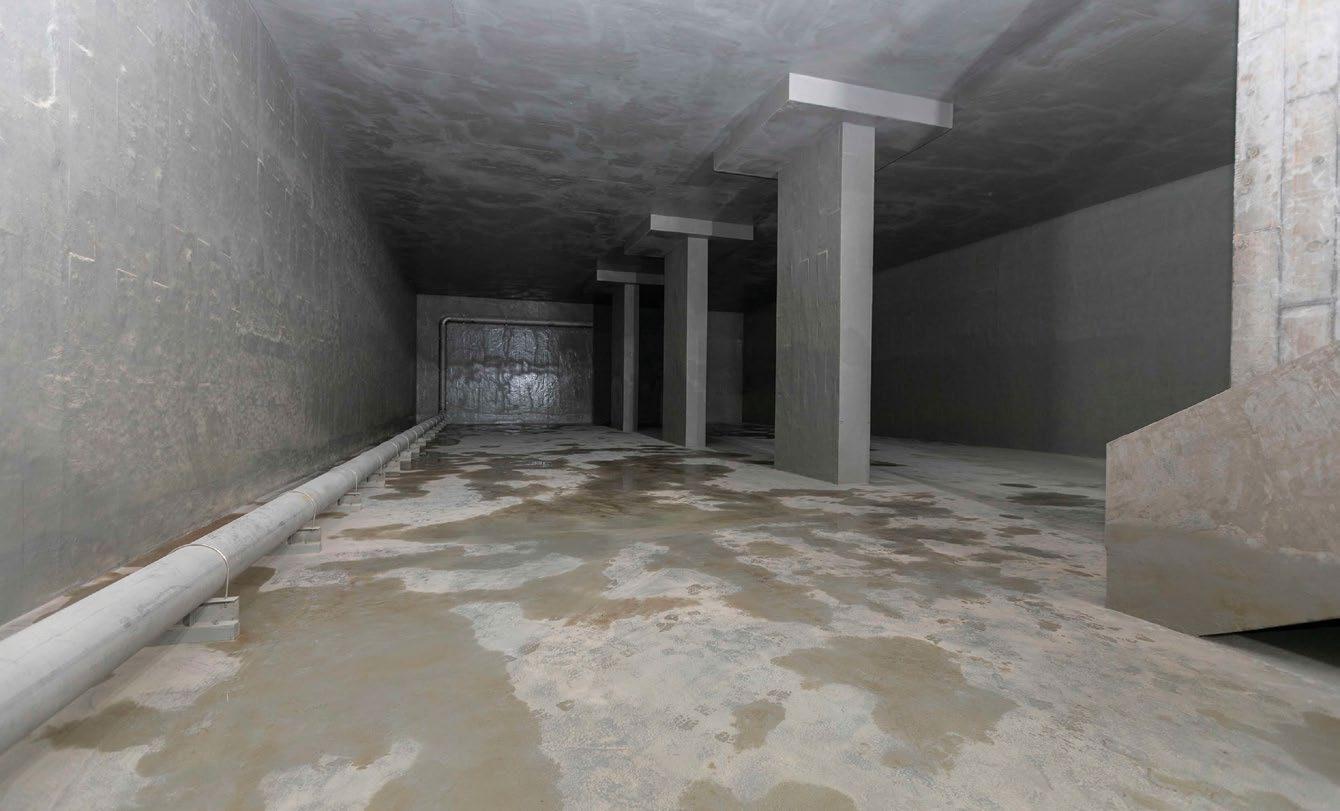
pools of potable water, the Bidadari USR was first proposed by PUB, Singapore’s National Water Agency, during the master planning of the Bidadari estate, as an innovative method to integrate the facility with the estate’s infrastructure, without
having to construct new water pipelines amidst other competing utilities and services.
It is an example of how water demand is met through a collaborative planning approach with multiple agencies, i.e. the Urban Redevelop-
ment Authority (URA), Housing & Development Board (HDB), and the National Parks Board (NParks).
The surface footprint of the Bidadari USR is about one-third that of a typical service reservoir of this capacity. Jointly constructed by PUB and HDB, the facility is almost entirely underground, with only the pumping station occupying an approximately 700 m2 plot of land within the Bidadari estate. This approach has enabled PUB to save about 1,500 m2, by integrating the land above the water tanks with the adjacent Bidadari Park.
Design and functions
Service reservoirs store drinking water from PUB’s treatment plants, before it is piped to consumers, and are a crucial part of Singapore’s water supply network. They serve as a buffer against daily fluctuations in water demand.
Existing service reservoirs are built on high ground, due to the need to maintain stable and consistent pressure throughout the network, so that water flows to customers via gravity, without the need for pumping. PUB currently operates over 10 such service reservoirs, including NEWater service reservoirs for industrial customers.
In contrast, the Bidadari USR was constructed in tandem with a new estate, to boost water pressure in the network. It supplies water to homes via up to five centrally operated pumps. These pumps operate during peak water usage hours, to maintain good water pressure in the water network, fortifying water supply to customers in the new estate. During off-peak hours, the USR will be filled up with potable water from other high ground service reservoirs to ensure adequate water supply for subsequent peak hour usage.
Using smart technology to operate Bidadari USR
Operations of the USR are controlled by a centralised system, reducing the need for manual operation. This is similar to other service reservoirs.
BIM (Building Information Modelling) technology was used for the 3D modelling and construction of the USR. Compared to conventional 2D models, this technology helped PUB visualise the layout of the USR structure more
efficiently, especially with complex layers of pipeworks within the USR.
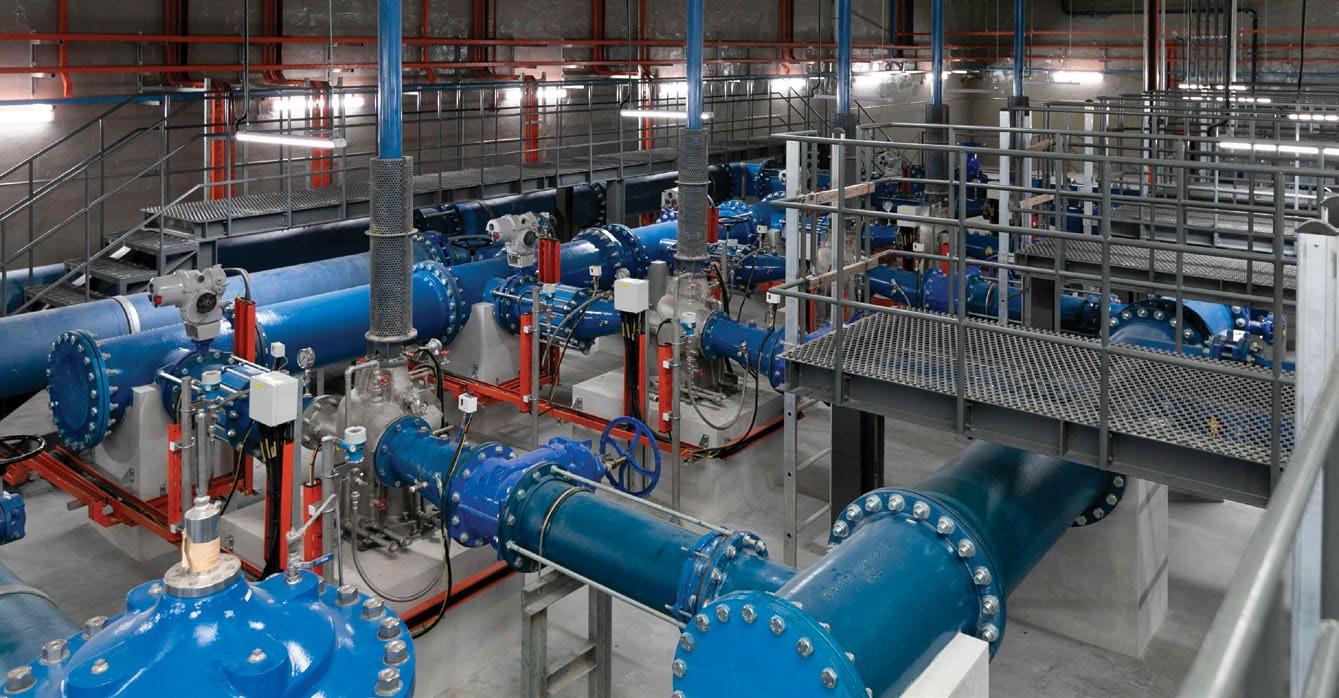
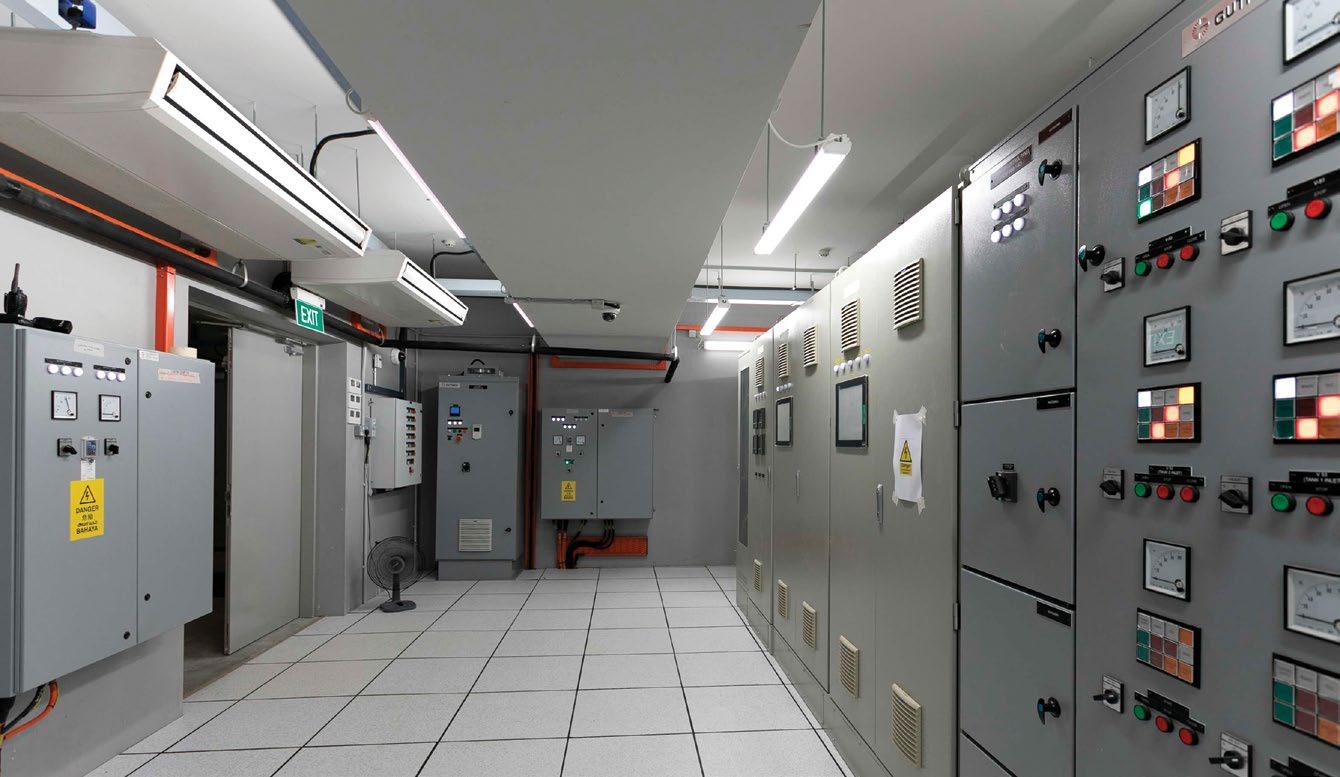
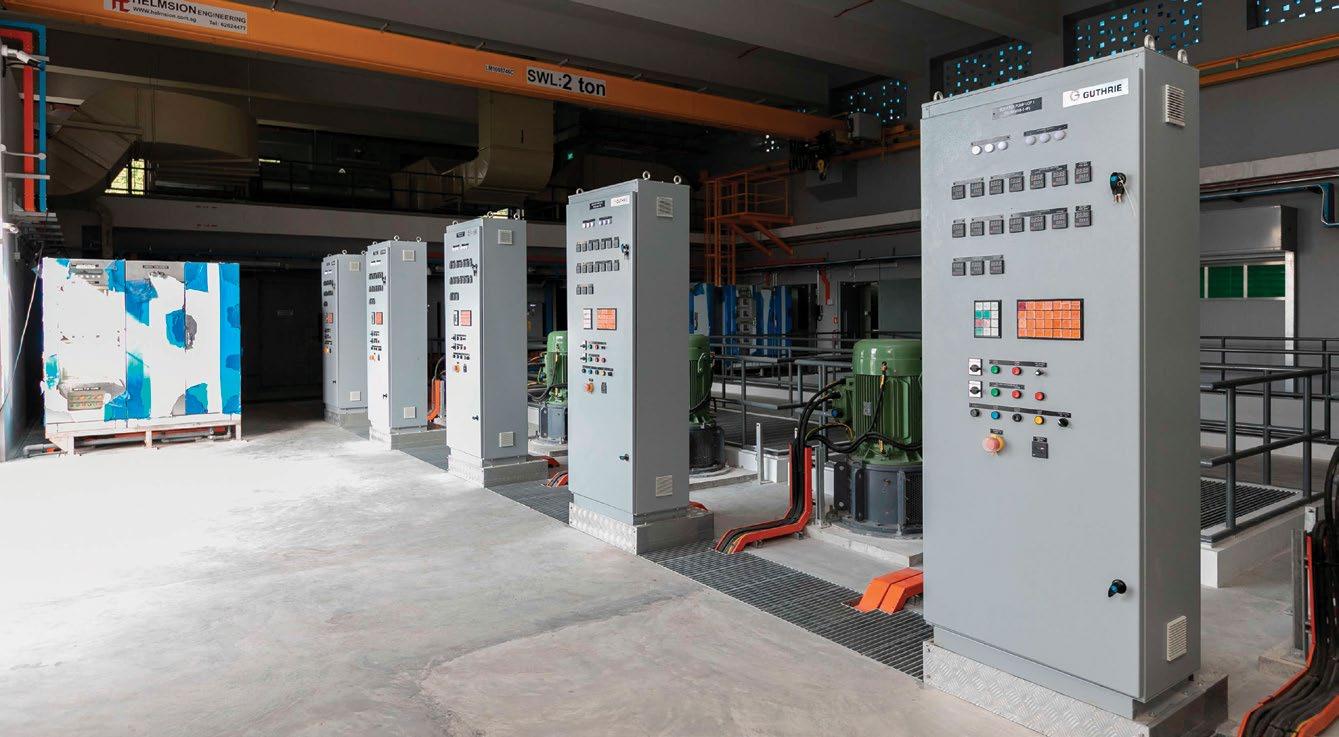
BCA partners industry to pilot research and innovation solutions.
The Building and Construction Authority (BCA) is supporting two novel Research and Innovation (R&I) solutions to enhance the efficiency of cooling in air-conditioned buildings. The solutions are aimed at reducing energy usage for cooling commercial office and hotel spaces, which can account for about half of the total energy usage in these building typologies.
The two pilot solutions are supported by BCA’s Green Buildings Innovation Cluster (GBIC) 2.0 programme, one of the key initiatives under the Singapore Green Building Masterplan (SGBMP), in support of the Singapore Green Plan, to achieve 80% improvement in energy efficiency for best-in-class green buildings by 2030.
Group Director of BCA’s Environmental Sustainability Group, Mr Ang Kian Seng, said, “Currently, our bestin-class buildings are achieving 71% improvement in energy efficiency compared to 2005 levels. The two pilot solutions are part of our ongoing efforts to push the envelope of environmental sustainability towards increasing energy efficiency improvement in buildings to 80% by 2030.”
“We hope to see more industry stakeholders stepping forward in this journey to achieve our sustainability aspirations for the built environment. To accelerate this, BCA will be launching a challenge call in July to invite the industry to develop innovative energy-efficient solutions,” he added.
Superhydrophobic coating for cooling coils
The first innovative solution involves a superhydrophobic (water repellent) coating for cooling coils in an air-conditioning system’s Air Handling Unit (AHU), which enables the coils to remain constantly dry.
In the AHU, the cooling coils perform the primary function of air dehumidification and cooling. The coils facilitate air-conditioning by cooling the air, as a result of which, water from the air condenses on the cooling coil surface.
However, the existing cooling coil materials are hydrophilic (water attracting) in nature, where condensed water forms a thick, continuous layer covering the cooling coil surface. This leads to reduced efficiency of the cooling coils, dust accumulation and micro-organism growth which, in turn, affect the quality of the cooled air, increase maintenance cost and the overall efficiency.
The proposed solution, with its superhydrophobic material, would enhance cooling coil heat transfer efficiency and it can be easily incorporated in existing and new AHU equipment, to improve overall performance, saving operation and maintenance costs. With improved efficiency of the cooling coils, the air-conditioning system’s chillers can also operate more efficiently.
The successful completion of this project is expected to result in a more than 30% reduction in energy consumption by the AHU and a 12% reduction in energy consumption by the chiller.
This collaborative research is led by Nanyang Technological University, Singapore (NTU Singapore), together with air conditioning contractor, Powen Engineering Pte Ltd, and building owners, South Beach Consortium and OCBC Property Services Pte Ltd. The two building owners will be piloting this innovation at their office premises.
Mr Lester Chan, Head of Sustainability at OCBC Group Property Management, said, “While we have achieved carbon neutrality in bank-
ing operational emissions, from 2022, we remain committed to advancing decarbonisation. We do this by consistently prioritising the deployment of sustainable technologies and optimising building system efficiency for our properties.”
“Through partnerships with industry players like BCA and NTU, we can also deliver more innovative solutions with long-term impact. Specifically for the real estate sector, conventional energy optimisation methods, such as equipment replacement, may not be that effective in the long run. The GBIC programme supports the test-bedding of new technologies, which may accelerate decarbonisation outcomes both for OCBC and the built environment at large,” he added.
Innovative M&V toolkit
The second innovative solution is a cost-effective monitoring system to measure the air-side system, which is the portion of the air-con system that deals with the movement and treatment of air within a building, to improve energy efficiency. Due to high cost of installing current systems for accurate measurement and verification (M&V) of air-side systems, building owners face challenges in optimising the AHU system within, for energy savings.
The innovative M&V toolkit, developed by Building System & Diagnostics Pte Ltd, consists of sensors and meters to measure parameters, such as air temperature. It will be able to interface with building management systems to optimise the AHU system, potentially achieving energy savings of 25%. The solution is being test-bedded at the South Beach Tower owned by South Beach Consortium.
Ms Samantha Tan, General Manager of South Beach Consortium
said, “As green buildings are an important part of Singapore’s climate change migration strategy, we are in need of innovative solutions that would bring us to the next level of greener buildings. To achieve this, we need to put on a different pair of lens. We need to work with stakeholders on piloting innovative solutions for energy efficiency improvement and green building features, that would transform to a potentially greener built environment and a reduction in carbon emission.”
“As we push the boundaries of energy efficiency and environmental sustainability, building owners will recognise the lower utility bills, more environment-friendliness, and better health and well-being, as the benefits of green buildings,” she added.
Continued push through the Green Buildings Innovation Cluster Programme
To-date, the government has committed SGD 117 million to the Green Buildings Innovation Cluster (GBIC) Programme GBIC. The programme has supported the research, development and demonstration of more than 80 innovative technologies from more than 70 firms.
Over the years, GBIC has been instrumental in driving advancements in energy efficiency for best-in-class green buildings under the SGBMP. Since Super Low Energy buildings were first introduced as best-inclass green buildings in 2018, there has been remarkable progress.
Initially achieving 60% improvement in energy efficiency over 2005 levels, Singapore’s best-in-class
green buildings have now achieved 71% energy efficiency improvement, as of 2023.
To push the boundaries of energy efficiency in buildings and further reduce carbon emissions in the built environment, BCA will continue to target building owners and developers, and their value chains to co-create and accelerate solutions and commercialisation through industry partnerships.
To spur the development of more innovative energy-efficient solutions, BCA had stated that it will be rolling out the Research & Innovation Challenge Call for Decarbonisation in July 2024, seeking innovations in the areas of Innovative Cooling Technologies, Data-Driven Smart Building Solutions, and Advanced Building Ventilation Technologies.
Established in 2014, GBIC is intended as a one-stop research, development, and demonstration programme for technologies and innovations that lead to highly energy efficient buildings.
To-date, the Government has committed SGD 117 million to GBIC, and the programme has supported the development and demonstration of more than 80 innovative technologies from more than 70 firms.
The GBIC programme comprises four initiatives:
• GBIC Research & Development (GBIC-R&D): GBIC R&D aims to build deep R&I capabilities for the industry and academia. It supports research projects that are nascent but lead to significant improvements in energy efficiency, with high potential for adoption.
• GBIC Prototyping: GBIC’s Product Prototyping scheme supports the development of market-ready prototypes that are applicable to the local context. GBIC also has a Design Prototyping Scheme that helps developers and building owners to conduct design studies and simulations to test-bed new technologies.
• GBIC Demonstration (GBIC-Demo): GBIC Demo is a scheme that facilitates the demonstration of innovative technologies in operational buildings. This allows the technologies to be validated, prior to wider deployment and commercialisation.
• GBIC Super Low Energy Building (SLEB) Smart Hub: SLEB Smart Hub is a national database for technologies and solutions that improve energy efficiency. Its online portal and embedded resource tools allow for the creation and dissemination of actionable knowledge to the industry and research community.
To further push the boundaries of energy efficiency, the enhanced programme (GBIC 2.0) focuses on three key areas. These areas were identified through technology scans and industry consultations to have high potential to generate significant energy savings:
• Innovative Cooling Technologies: Air-conditioning accounts for 40% to 60% of a building’s energy consumption. GBIC 2.0 will fund research and innovation (R&I) in novel cooling technologies that can be
adapted to Singapore’s tropical climate and yield at least 25% to 30% improvement over the Green Mark Platinum standards. Research areas include evaporative cooling and reducing the use of hydrofluorocarbon refrigerants.
• Data-Driven Smart Building Solutions: There is significant potential to improve building energy performance through the use of Internet of Things devices and the data they generate. GBIC 2.0 will look into solutions to integrate across different smart building systems and to manage a building’s energy demand in response to input from the electrical grid and renewable energy sources.
• Advanced Building Ventilation Technologies: GBIC 2.0 will increase emphasis on ventilation technologies that can improve energy efficiency and contribute to better public health outcomes. This includes R&I on aerodynamic fans, building facades that improve the quantity and quality of fresh air, and ventilation systems that are calibrated according to building occupancy patterns.
The subjects covered included sustainability, decarbonisation and refrigerants.
The AHR Expo (International Air-Conditioning, Heating, Refrigerating Exposition) 2024 was held in Chicago, USA, from 22 to 24 January 2024.
The show provided a platform for a discussion on important topics such as decarbonisation, refrigerant regulation and heat pumps, as well as featuring the displays of 1,875 exhibitors, spread over 527,520 ft2 of space. The show attracted more than 48,000 attendees.
Additionally, the Podcast Pavilion hosted 20 podcasters who covered the latest topics of interest, across the industry.
At the show, the 2024 Education Program highlighted topics within the industry with the goal of addressing pain points, opportunities and applications, to increase efficiencies, business and relationships.
In 2024, the education program featured 120 free sessions, 153 new product presentations and seven panels in the AHR Panel Series.
In the 2024 State of the Industry Panel, the topics covered decarbonisation, including gas bans, grid capacity, heat pumps and dual-fuel options; building automation and AI as they relate to energy conservation and future planning; refrigerant updates including sell-through periods, EPA regulation, recovery and reclamation etc; and workforce development, virtual training, bridge programs and more.
The show floor also presented the products and technologies of the winners of the 2024 AHR Expo Innovation Awards. Winners are chosen annually in 10 industry categories, representing the most innovative products and technologies in the market.
The AHR Expo is an essential event for HVACR professionals, that at-
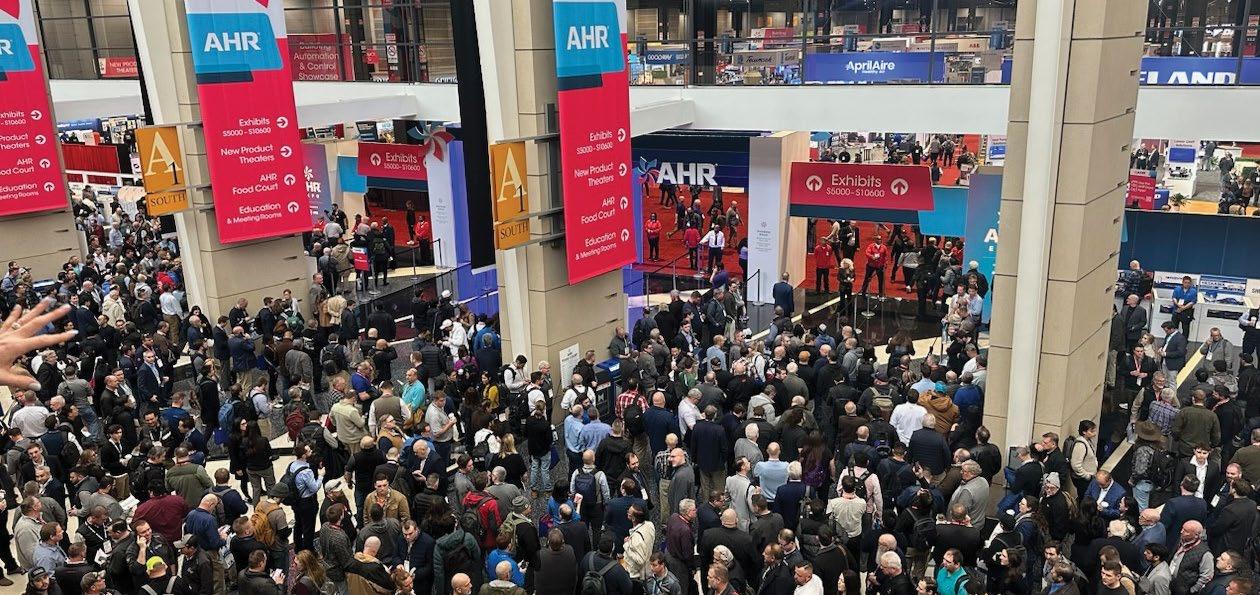
AHR Expo 2024 attracted more than 48,000 attendees.
Building Automation
Winner: 75F
Innovation: 75F HyperStat Split
Cooling
Winner: Danfoss
Innovation: DSG Compressor
Heating
Winner: Ephoca
Innovation: Nextac - The next generation of PTAC
Indoor Air Quality
Winner: WellStat
Innovation: WellStat
Plumbing
Winner: Rheem Water Heating Innovation: Triton Light Duty (50- and 75-gallon)
tracts a comprehensive gathering of the industry, from around the globe, each year. The show provides a forum where manufacturers and suppliers of all sizes and specialities come together to share ideas and showcase the future of HVACR technology.
Since 1930, the AHR Expo has been a good venue for OEMs, engineers, contractors, facility
Refrigeration
Winner: AirGreen
Innovation: AirGreen-BMIL Brine-based DX Cold Room Heat Pump
Software
Winner: Interplay Learning
Innovation: SAM (Skill Advisor and Mentor)
Sustainable Solutions
Winner: Midea Residential Air
Conditioning
Innovation: Midea PWHP
Tools & Instruments
Winner: INFICON
Innovation: FLUE-Mate Combustion Analyzer
Ventilation
Winner: HVAC Manufacturing and Technology Inc
Innovation: SAV - Smart Air Valve
operators, architects, educators and other industry professionals, to experience everything new in HVACR as well as build relationships.
The AHR Expo is co-sponsored by ASHRAE and AHRI and is held concurrently with ASHRAE’s Winter Conference.
The next edition of AHR Expo will take place from 10 to 12 February 2025, in Orlando, Florida, USA.




Meet your Green Mark targets with Keppel EaaS
Meet Green Mark Efficiency Standards
Operational guarantees that the total system efficiency meets the Green Mark efficiency standards over the contractual lifetime.

Market-Leading Energy Efficiency
Design optimisation to upgrade asset performance, coupled with operational and performance optimisation via our Operations Nerve Centre.

Reduced Upfront Capital Investment & Recurring Operational Costs
Up to 20% life-cycle cost savings and predictability in tariffs through Keppel CaaS’s pay-as-you-use model.
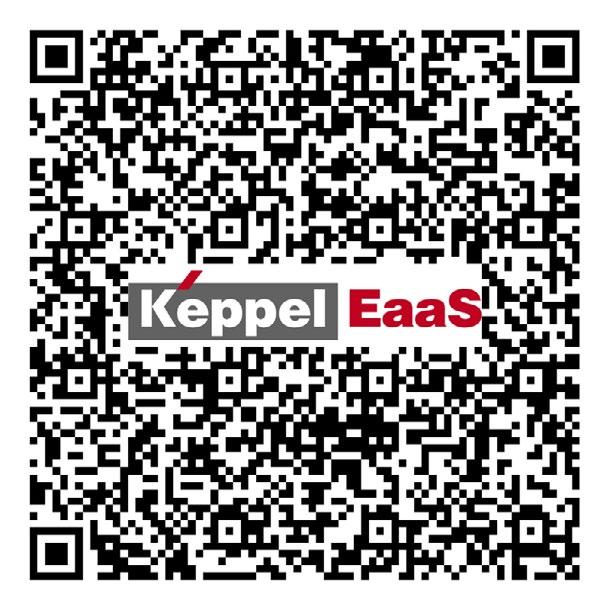

Enhancing energy efficiency by optimising the design and operation of systems.

Singapore Green Mark Certification standards are becoming more stringent
The Singapore Green Building Masterplan (SGBMP) aims to enable key stakeholders in the industry to develop new green buildings and green the larger stock of existing buildings, through its three key targets of ‘80-80-80’, by 2030 [1].
The Building and Construction Authority’s (BCA) Green Mark 2021 (GM: 2021) scheme was launched, as part of SGBMP, to raise the sustainability standards of Singapore’s built environment and align them with the United Nations’ Sustainable Development Goals [2].
More stringent criteria and scoring frameworks are being implemented to enhance energy performance standards and achieve other key sustainability outcomes. Premise owners will now have to assess their buildings’ energy use intensity, identify areas to improve
energy efficiency and adopt greener solutions, to improve their assets’ sustainability performance, while meeting tenants’ needs.
Cooling-as-a-Service helps improve a building’s energy performance Retaining or improving a building’s energy performance can be challenging for premise owners, who will typically have to purchase, install and maintain energy management systems, as well as coordinate with multiple third parties, including consultants and contractors, in the process. The operating cost may be borne by the premise owners or passed through to the tenants.
Keppel offers Cooling-as-a-Service (CaaS) which provides premise owners with easy access to efficient cooling solutions. This helps to alleviate overinvestment in cooling systems and infrastructure, especially when premise owners do not need
in-house cooling expertise or economies of scale to drive performance and cost optimisation. Subscribing to CaaS can also allow premise owners to focus their manpower and operating resources on other business priorities, while Keppel undertakes the operations and maintenance of the cooling systems.
CaaS is a core part of Keppel’s Energy-as-a-Service (EaaS), a onestop solution which includes other energy nexuses, like distributed solar photovoltaics and electric vehicle charging, that can help premise owners enhance their sustainability performance and offerings to building users.
Through Keppel’s CaaS, premise owners can enjoy the following benefits:
• Achievement of Green Mark efficiency standards with operational guarantees that the chilled water plant and airside system that support the building’s cooling needs
will meet the pre-requisite Green Mark efficiency standards over the contractual lifetime. With guaranteed performance and uptime, asset owners can be assured of their building’s cooling performance and efficiency.
• Enhanced energy efficiency through design optimisation to upgrade asset performance, coupled with operational optimisation via the intelligent Operations Nerve Centre (ONC). The ONC harnesses advanced digital and machine learning technologies to provide real-time monitoring and control of Keppel’s operations in Singapore and abroad, round-theclock, achieving 30% to 40% energy savings.
• Reduced upfront capital investment and recurring operational costs, with life-cycle cost savings of up to 20%, achieved by tapping on Keppel’s economies of scale and pooled resources across the entire CaaS portfolio. Through CaaS’s subscription model, there is also predictability in tariffs.
Premise owners are increasingly recognising the value of CaaS. Keppel was awarded a contract by the Urban Redevelopment Authority of Singapore to design, build, own and operate, for a period of 30 years, a new, large-scale, district cooling system in the Jurong Lake District, with a design capacity of 29,000 Refrigeration Tons. The system is expected to be 30% more efficient than conventional, in-building cooling systems and abate over 145,000 tonnes of carbon emissions over the operating period [3].
Keppel was also selected as the CaaS provider for Raffles City Singapore, one of Singapore’s largest integrated developments. This initiative is expected to reduce energy consumption by over 30% and abate at least 76,000 tonnes of carbon emissions [4]. Keppel will also ensure that the cooling performance of the development meets the efficiency requirements for BCA’s Green Mark Platinum (Super Low Energy) certification, for the entire contractual term.
The future of CaaS
As the demand for cooling increases, adopting clean and efficient cooling technologies is crucial to mitigating climate risks and managing electricity consumption. CaaS can revolutionise how cooling is delivered, by providing advanced solutions in a reliable and costeffective manner that benefits people, businesses and the environment.
References
[1] Building and Construction Authority, 2023: Green Building Masterplans.
[2] Building and Construction Authority, 2024: Green Mark 2021
[3] Keppel, 2023: Keppel awarded contract to design, build, own and operate large-scale District Cooling System in Jurong Lake District.
[4] CapitaLand, 2024: CapitaLand Investment adopts Cooling-as-a-Service at flagship Singapore properties as part of continuous drive for sustainability and cost efficiency.
Keppel Ltd (Keppel), through its Infrastructure Division, was awarded a contract by the Urban Redevelopment Authority (URA) of Singapore, for a District Cooling System (DCS) in Jurong Lake District (JLD). Under the contract, Keppel will design, build, own and operate the new, large-scale DCS, for 30 years.
The DCS will have a design capacity of 29,000 Refrigeration Tons (RT) and will supply chilled water and related services to an estimated gross floor area (GFA) of 1.4 million m2
It is intended to serve future developments in JLD, including office, business park, residential, retail, hotel and institutional spaces. The DCS will be operational in tandem with the completion of future developments in the district.
Through advanced technology and proven operating know-how, Keppel’s DCS solution for JLD is expected to achieve superior efficiency levels which are over 30% higher than conventional in-building systems and 18% higher than the National Environment Agency’s Minimum Energy Efficiency Standards (MEES), as well as garner significant cost savings of up to 30% compared to conventional systems.
With best-in-class design and operations, the JLD DCS plant is estimated to be able to abate over 145,000 tonnes of carbon emissions over the 30-year operating period, compared to the industry benchmark.
This is equivalent to the carbon abatement achieved through planting 100,000 trees.
The West Region of Singapore is the country’s largest manufacturing hub, with three new business and employment areas – JLD, Jurong Innovation District (JID) and Tuas Port.
JLD and JID serve as testbeds for new urban solutions and infrastructure to create more pleasant working and living environments. JLD is planned by URA to be the largest business district outside the city centre in Singapore and is positioned as a world class sustainability district. Envisaged to be a model district for urban sustainability under the Singapore Green Plan 2030, the vision for JLD supports Singapore’s ambition to be a carbon services hub and a leading centre for green finance in Asia and globally.
They are defined by high performance, ease of maintenance and a lower carbon footprint.
LG Electronics’ B2B heating, ventilation and air conditioning (HVAC) business is growing, propelled by strong sales of the company’s chillers designed for large buildings and commercial facilities.
Chillers have been a part of LG’s offerings since 2011. The company now has a full lineup of HVAC solutions, including residential and commercial air-conditioners, central air conditioning chillers, chillers for nuclear power plants, and building management systems (BMS).
LG chillers, equipped with an array of innovative technologies, not only offer good performance and energy efficiency but are also cost-effective in terms of maintenance. By integrating advanced heat pump technology and employing high-efficiency compressors and heat exchangers, the company’s advanced chillers have achieved reduced energy consumption and operational expenses compared to conventional chiller products.
Compared to previous 1-stage LG chillers, the new LG chillers incorporate magnetic/air bearings (oil-free) with VSD drives, customised impellers and falling-film heat exchangers with high efficiency.
The deployment of oil-free technology and fewer moving parts has helped to reduce the operational cost of LG chillers by up to 36%.
The LG Inverter Scroll Chiller, one of the company’s notable products, is an efficient heat pump system that supplies water and provides heating and cooling for commercial facilities. It utilises the R32 refrigerant which has a global warming potential (GWP) that is lower than that of the R410 refrigerant.
Designed with easy maintenance in mind, LG chillers feature a number of simple-to-replace components and offer convenient access to streamline the inspection process.
Already well-established in Asia, LG’s chiller business is expanding internationally, with increasing presence in the Middle East, Europe and Central and South America.
In addition to deploying sophisticated core technologies, including those for key components such as compressors and motors, LG is also proactively investing in research and development, with a focus on essential HVAC technologies including technologies for heat exchangers, inverters and heat pumps.
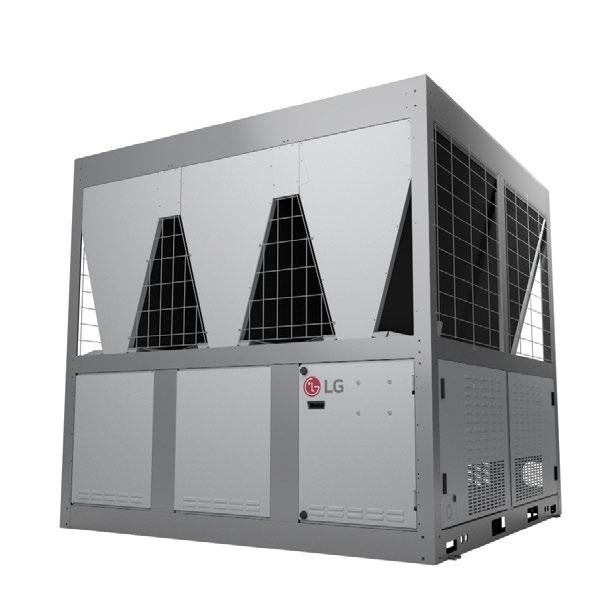
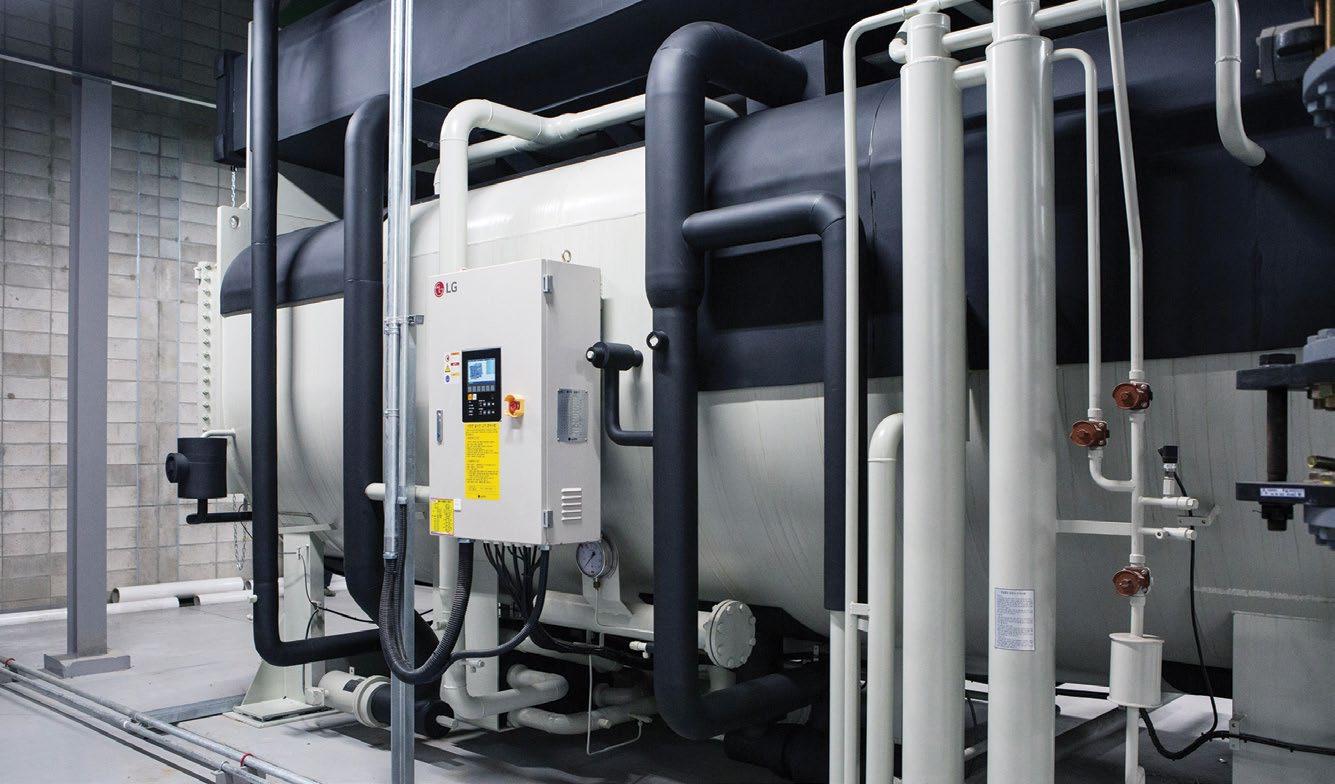
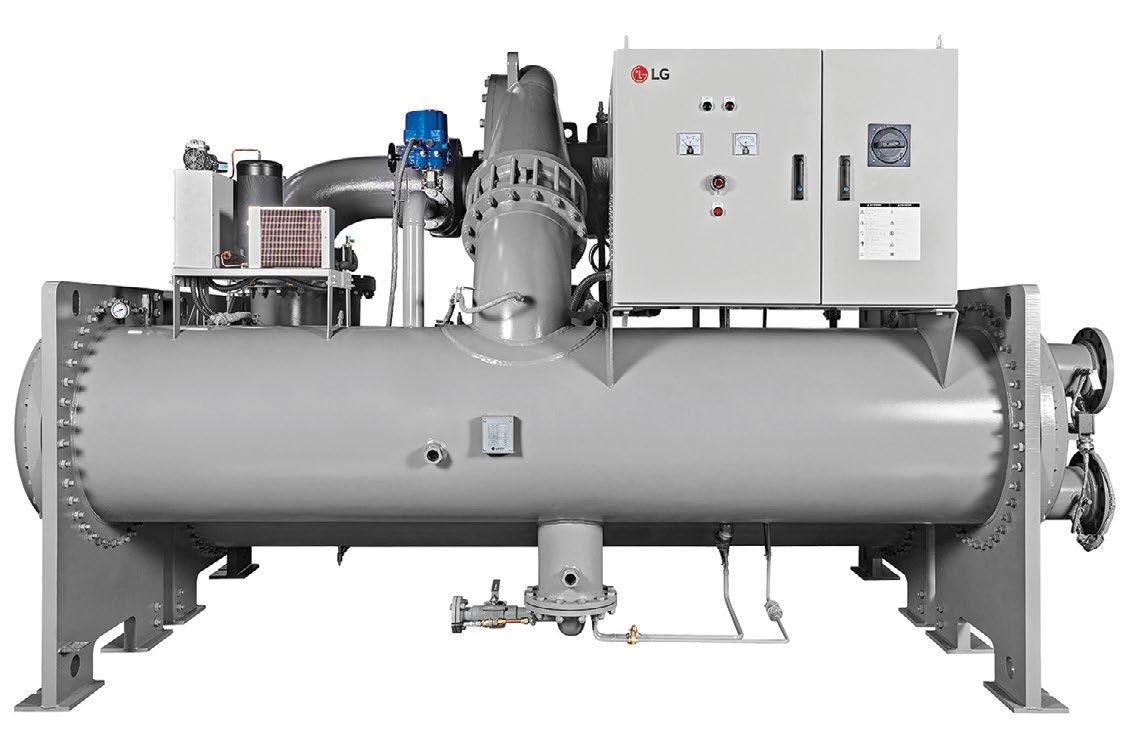
Addressing critical challenges and promoting innovative solutions.
ASHRAE and the World Filtration Institute (WFI) have signed a Memorandum of Understanding (MoU) formalising the relationship between the two organisations.
The agreement outlines how ASHRAE and WFI will work cooperatively on common public affairs initiatives and leverage the strengths of both organisations to address critical challenges in the industry, while promoting innovative solutions that
benefit the global community.
“ASHRAE is pleased to establish this collaboration with the World Filtration Institute (WFI) through our new Memorandum of Understanding,” said ASHRAE President M Dennis Knight.
“Signing this MoU with ASHRAE marks a significant milestone for the World Filtration Institute,” said Dr Christine Sun, WFI President.
The MoU includes consistent
leadership communication to:
• Ensure ongoing advancement of collaborative projects.
• Keep each respective organisation informed of major initiatives.
• Discuss new opportunities for collaboration.
ASHRAE and WFI will also collaborate on advocacy, conferences and meetings, research, publications, education, and technical activities coordination.

EC fans can unlock greater energy efficiency without compromising on indoor air quality.
An Energy Reset initiative is a key pillar of the Singapore Green Plan 2030 which was developed to advance sustainable development and achieve net zero emissions by 2050.
Efforts focus on improving energy efficiency through legislation, incentives and public education, with the Building and Construction Authority (BCA) enforcing sustainability standards for both new and retrofitted buildings.
Similarly, the importance of indoor air quality (IAQ) has become especially clear, notably since Singapore’s Ministry for Sustainability and the Environment officially launched the ‘Industry Guidelines for Indoor Air Quality’ to raise public awareness of its importance.
It is critical to note that energy efficiency does not have to come at the expense of good IAQ – it can and should coexist. For instance, EC (Electronically Commutated) fans, driven by energy-saving EC motors with built-in electronic control, operate within an optimal range, offering economical energy use and straightforward, demand-controlled ventilation.
These solutions provide numerous advantages. Beyond reducing energy consumption and lowering energy costs, they also contribute to lower CO2 emissions, thus supporting efforts to mitigate global warming. Furthermore, they are easily controlled via a 0 to 10 V signal, allowing the ventilation rate to be adjusted according to actual needs – all the while maintaining a low sound level throughout the entire fan performance range.
The benefits of energy-efficient products are evident for both new constructions and retrofits. This is demonstrated by a case study in which Systemair upgraded the ven-
tilation system at Beckstein winegrowers’ cooperative, founded in 1894, in Germany, by replacing an old axial fan with modern MUB fans featuring EC technology.
This upgrade saved valuable space, reduced noise levels and, most importantly, achieved significant energy savings. The initially projected energy saving of 30% was quickly achieved and, depending on the previous system, up to 50% energy savings is possible with such fans.
Opting for solutions from a sin-
gle supplier can further enhance efficiency. For instance, Systemair’s range of EC fans includes EC Basic, a range of controllers specifically developed to meet simple control requirements, when using EC fans. These controllers are simple to connect, install and set up, while offering economical and affordable demand control when used in a system with Systemair EC fans.
The integrated sensor (or an external sensor for the universal controller) measures current conditions, allowing the fans to

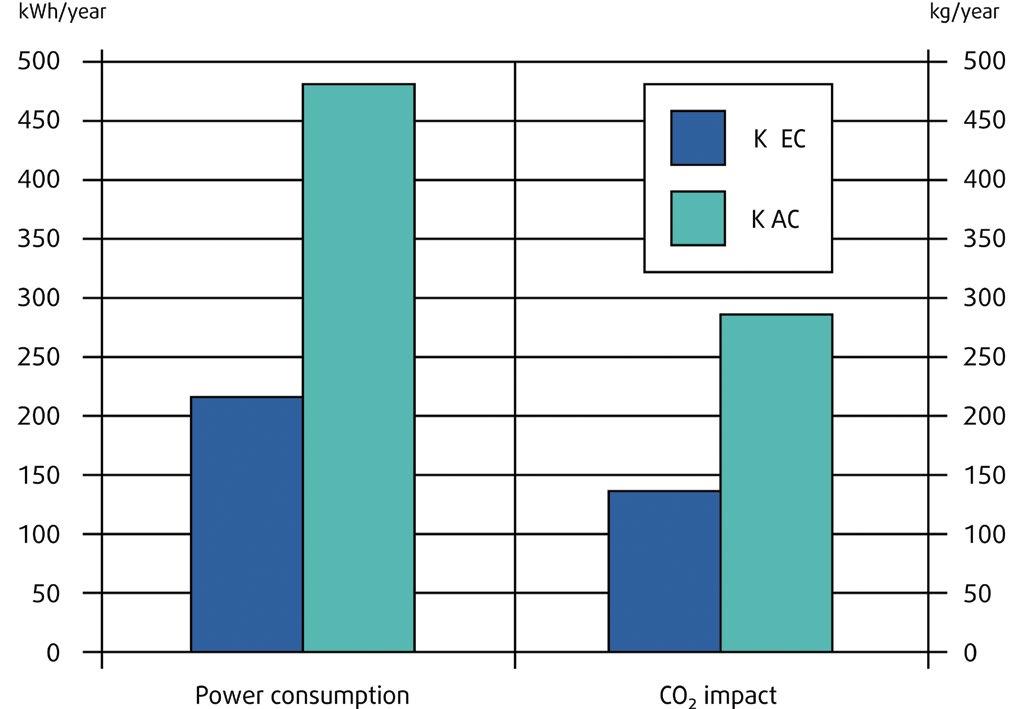
automatically slow down when demand decreases. This is because the software controls the motor’s operation, enabling customers to optimise and integrate the motor, fan and controller, with the application. Data communications, constant volume control and variable speed control can also be incorporated.
Undoubtedly, maintaining good IAQ and energy-efficient solutions is crucial. These dual objectives enhance occupant health and comfort while reducing energy consumption and CO2 emissions.
Technologies like EC fans show that superior air quality and significant energy savings can coexist, making sustainable and healthy building environments achievable.
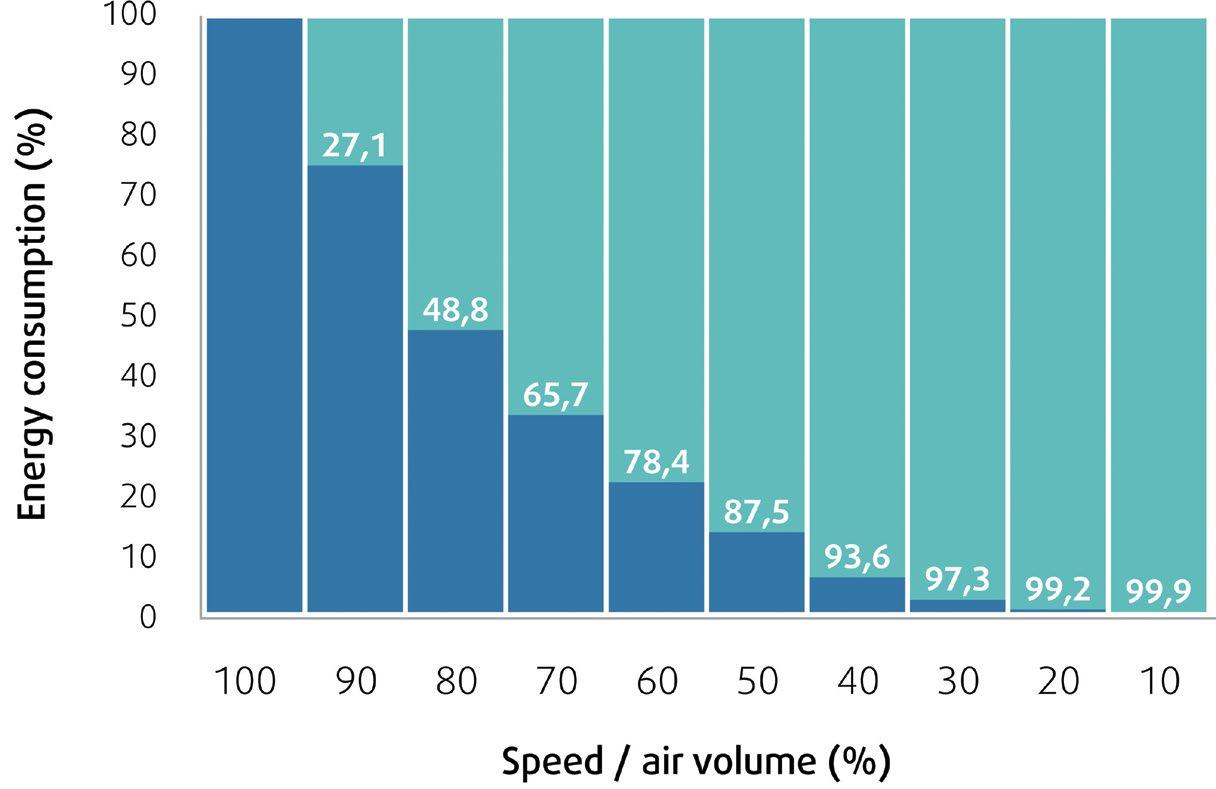
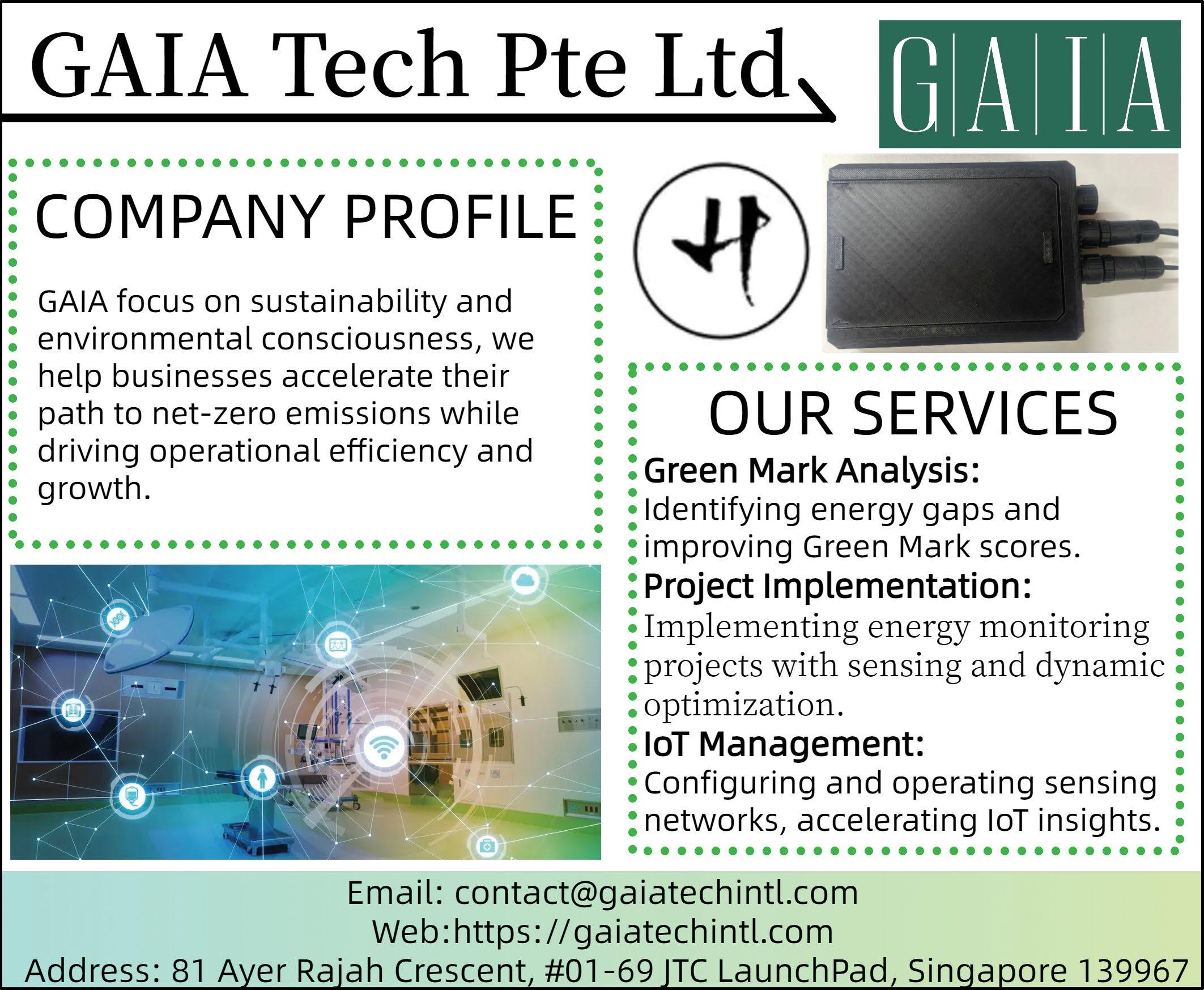
They offer an opportunity to understand the vulnerabilities of the Internet of Things and implement countermeasures.
The rapid proliferation of the Internet of Things (IoT) has revolutionised our interaction with technology, integrating smart devices into nearly every aspect of our lives. However, this surge in connectivity has also led to what some experts describe as the ‘Internet of Disaster’.
The growing number of interconnected devices, from home appliances to industrial machinery, creates an extensive attack surface for cybercriminals. The inherent vulnerabilities in many IoT devices, often due to inadequate security practices and lack of standardisation, have resulted in numerous security breaches, data thefts and even large-scale disruptions.
These devices, frequently lacking robust security mechanisms, become easy targets for attacks, compromising both personal privacy and critical infrastructure.
Aspiring engineers in the cybersecurity sector can look forward to an introductory course on IoT Security Fundamentals, tailored for members of the engineering fraternity. Over the two-day course, participants will learn how to safeguard internet-enabled devices, using device authentication, encryption protocols, and vulnerability management.
The course is a joint initiative between the new CyberSG Talent, Innovation, and Growth (TIG) Collaboration Centre; the Institution of Engineers, Singapore (IES); and Temasek Polytechnic.
Addressing the vulnerabilities in IoT requires a comprehensive understanding of IoT security, which is where the IoT Security Fundamentals course can make a significant impact.
Covering essential topics such
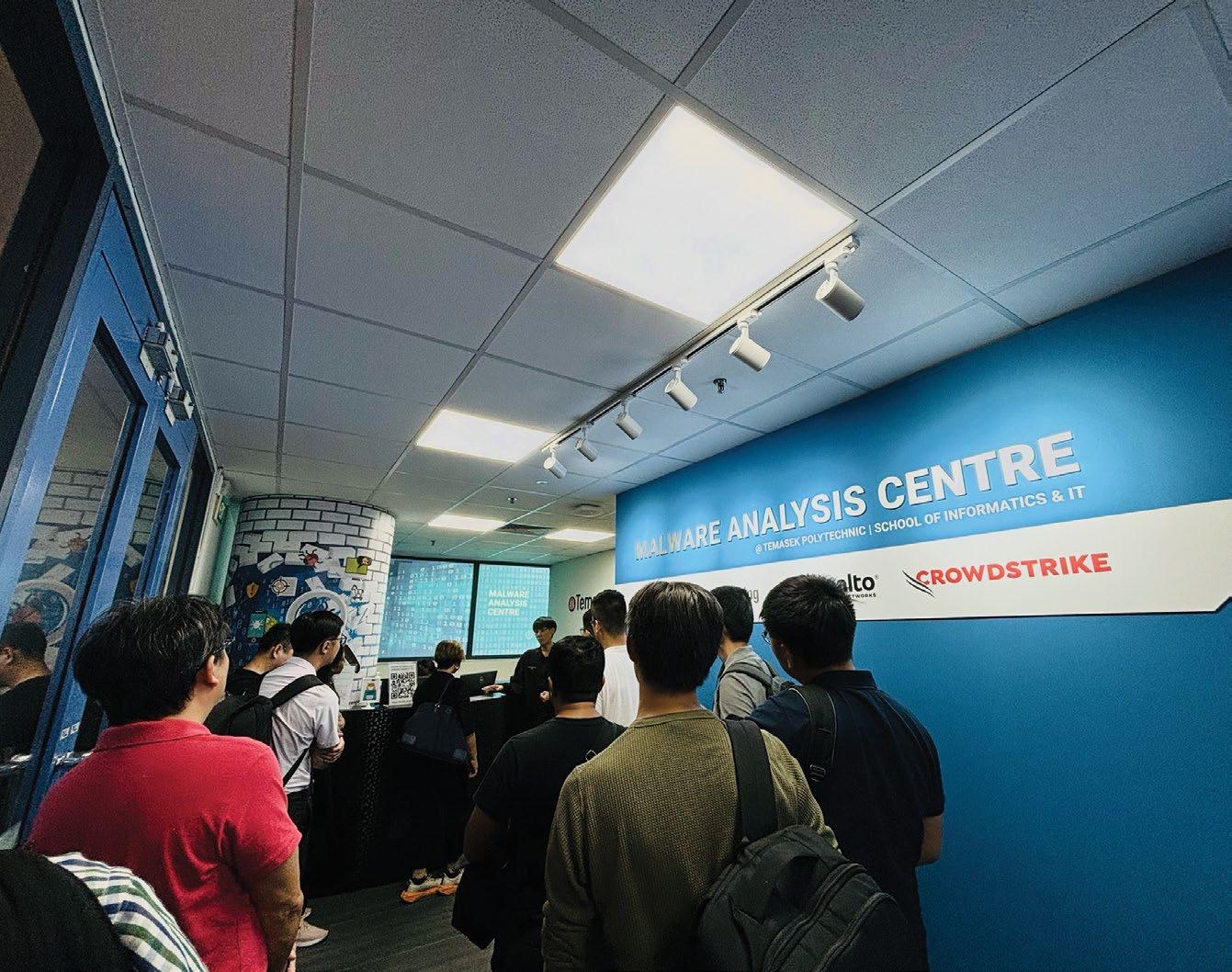
as Network Fundamentals (X.200 – OSI-RM), Security Fundamentals (CIA/AAA) and Embedded Device Security, the course enables participants to gain a solid foundation in securing IoT ecosystems.
The IoT Security Fundamentals course includes sessions on Communication Security, Application Security, and Risk Management, equipping learners with the knowledge and tools needed to mitigate risks and implement effective countermeasures.
Through this course, individuals will be empowered to enhance IoT device security, helping to transform the ‘Internet of Disaster’ into a safer and more reliable network.
The IoT Security Fundamentals course is conducted by Dr Yap Chern Nam, a faculty member of Temasek Polytechnic’s School of Informatics and IT.
IES contributed to the course by
delivering a Professional Engagement Talk that addressed the gap between engineering and the understanding of cybersecurity in the cyber-physical domain.
The inaugural run of the course was successfully completed on 30 and 31 July 2024.
For more details of the course and the upcoming course schedules, please click on the link below.
IoT Security Fundamentals or scan the following QR code:


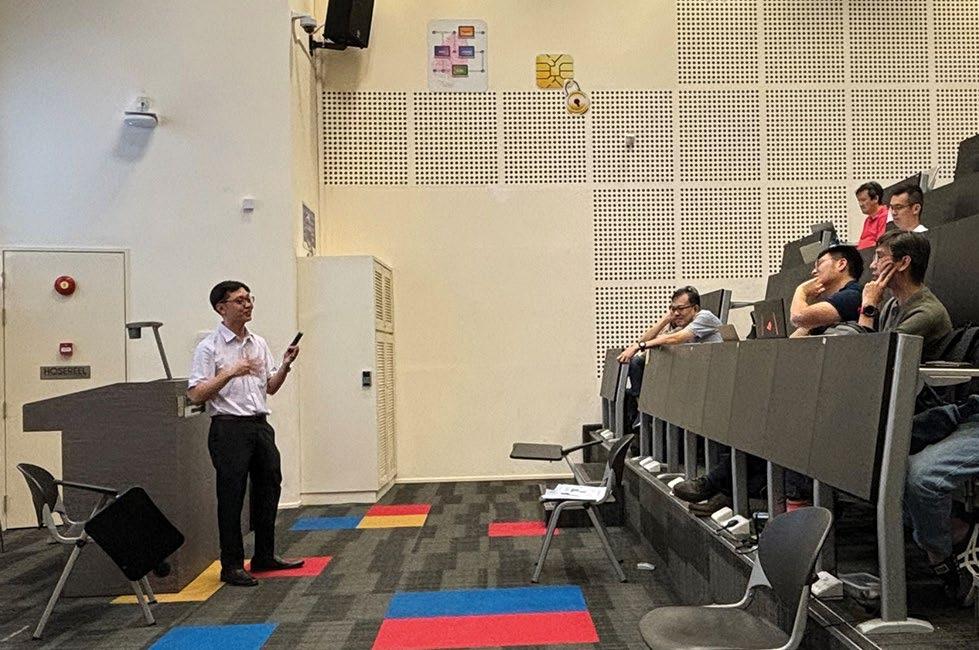
A World Economic Forum report released in January this year provides a snapshot of the multifaceted challenges facing the global cybersecurity landscape. While increased geopolitical tensions and economic instability continue to concern industry experts, the report spotlights widening cyber inequity and
emerging technologies, such as artificial intelligence, as key rising risks in the cybersecurity sector.
The Global Cybersecurity Outlook 2024 report, developed in collaboration with Accenture, distils insights of industry experts and global executives about key cyber trends that leaders will need to navigate in
Under the IES Green Plan 2030 framework, IES has developed meaningful relationships with various stakeholders in the engineering community.
With the conclusion of the IES Repositioning study in 2021, supported by a LEAD (Local Enterprise and Association Development) grant from Enterprise Singapore, a new vision was established. This vision focuses on addressing Singapore’s major challenges and transforming engineering to meet the nation’s sustainability goals, with a strong emphasis on digitalisation.
Efforts to advance the field for societal benefit have been supported by industry partners, national initiatives and consultations with government agencies.
In March 2024, a partnership was formed with the Cyber Security Agency of Singapore (CSA), through SG Cyber Associates, to offer ISC2’s Certified in Cybersecurity (CC) program. This program is recognised under the SkillsFuture SG Skills Pathway for Cybersecurity, to provide essential knowledge and skills in cybersecurity, integrating security considerations into the training of engineers for the upcoming transformation.
2024, based on a series of surveys carried out between June and November 2023. Given the increasingly complex cyber threat landscape, the report also calls for concerted collaboration, across borders and industries, to counter these interrelated threats and build a more resilient environment.
Mr Johan Fantenberg, Principal Solutions Architect, Ping Identity, points out that AI will be driving both the problem and the solution.
The Singapore Engineer (TSE): In what ways do you anticipate the progression of AI-fuelled identity attacks in 2024?
Mr Johan Fantenberg (JF): The identity industry is constantly growing, to overcome novel security challenges. The rising adoption of artificial intelligence (AI) has also pushed the identity industry into overdrive. While there are many benefits that AI brings to our daily lives, cybercriminals are also harnessing the power of AI to commit virtual crimes. Advanced AI-generated impersonations, such as synthetic voices created from minimal personal data, have enabled cybercriminals to craft convincing phishing emails to trick users.
Cyber attackers continue to target sectors like banking and healthcare, using stolen personal information, such as social security numbers, driver’s licences and birthdays, to commit large-scale fraud. This can result in financial loss and issues with recovering individual identities. The ease of access to AI tools has enabled cybercriminals to launch more targeted and effective attacks to cause disruptions.
Ping Identity’s most recent survey reveals that 85% of Singapore firms expect more identity compromises due to AI, with 99% facing identity verification challenges and half struggling to balance security needs with user rquirements. The main concerns include newly emerging AI threats (97%), phishing (95%), social engineering (93%), and credential compromise (91%). The survey also reveals that 45% of businesses in Singapore indicated that reducing financial and reputational losses due to fraud and breaches was among their top priorities.
TSE: What steps can organisations take to protect themselves from AI-driven identity attacks, given the escalating complexity of these dangers?
JF: First and foremost, awareness and education provide the impetus for a holistic security strategy. It equips stakeholders to detect and respond to AI-facilitated scams as much as it gives organisations the tools to withstand the attempts of threat actors.
To address the evolving landscape of identity threats, organisations must adopt a forward-thinking approach to advanced technology investment. Decentralised Identity (DCI), which refers to an approach to identity management, gives users control of their personal information. 99% of Singapore organisations indicated that adopting DCI is valuable for their customers while only 41% have implemented a strategy to use DCI as a protection against fraud, but more are beginning to offer DCI.
Identity and Access Management (IAM) solutions play an important part in this, by improving detection capabilities and implementing strong verification processes such as Multi-factor Authentication (MFA). These technologies aid in detecting anomalies and ensuring that extra proof of identity is obtained before granting access.
Password-less authentication, for instance, using cryptographic functions, instead of traditional credentials, can mitigate security concerns, strengthen the security architecture, and minimise the probability of credential compromise.
TSE: How might AI be utilised as a protective tool against AI-driven identity attacks?
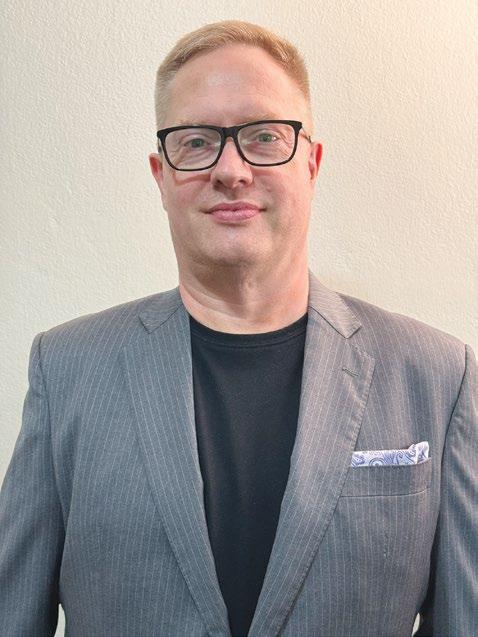
JF: The proliferation of generative AI makes it far easier to imperson ate others, and there has been an increase in attackers exploiting AI to develop new malware, create synthetic identities, and generate more targeted and authentic-looking phishing campaigns.
Organisations that harness AI and Machine Learning (ML) are poised to boost their speed of anomaly detection and increase the overall effectiveness of their cybersecurity posture. AI algorithms are able to recognise and flag any suspicious activity or unusual patterns associated with identity attacks, enabling early detection and prevention mechanisms.
When systems work in real time, constantly analysing new data inputs and behaviours, they enable a process of continuous monitoring of user activities, giving organisations the ability to take quick actions against any potential threats.
Using AI can help organisations manage access permissions and digital identities more efficiently. Organisations will be able to restrict access to systems and files based on a user's role, behaviour, or risk score, along with the sensitivity of the data being accessed – which gives an enhanced layer of security against any unwarranted access.
TSE: Given the fluid landscape of cyber threats, how do we stay ahead of evolving techniques for AI-driven identity attacks and consistently refine our defensive tactics?
JF: Fraud has caused losses totalling over USD 10 billion in 2023 globally, nearly a 14% increase from the previous year. An alarming 827,000 reports were made due to credit card
fraud and loan-related, lease-related, as well as other identity-related fraud. As AI-powered threats are on the rise, adopting a holistic identity approach, powered by AI, is the best way to combat AI-driven identity attacks.
A holistic approach to identity, which involves authentication, authorisation and governance, working together, along with layered intelligence and AI, will effectively counter today's threats.
Identifying suspicious users in real time, regardless of where they are in the user journey, helps to recognise anomalies that could indicate an attack before it has a chance to take hold. A real-time breach response using AI, where it autonomously creates defensive patches upon detecting threats, coupled with machine learning, enables an instant response without human intervention.
TSE: There are tremendous benefits, as well as risks, associated with AI. How can businesses fully leverage the benefits and yet manage the risks, especially the possibility of cybercrimes being committed?
JF: Organisations should use AI to fight against AI-powered threats. AI-powered fraud detection systems are able to process and analyse vast amounts of data to identify patterns and anomalies like unusual login locations or transaction behaviour. Indicating these fraudulent activities allows organisations to detect identity theft attempts in real time. AI systems can also continuously learn from new data, adapt to evolving fraud tactics, calculate the risk level of an action or request, and issue the appropriate authentication response.
AI also poses risks to emerging methods of establishing and verifying identity. There is growing ev-
Ping Identity, a leading provider of seamless and secure digital experiences, recently released the findings of its new survey, shedding light on the state of identity fraud prevention in today’s AI-driven digital world.
For the global report, Ping Identity and Vanson Bourne surveyed 700 IT decision-makers, between February and March 2024, from the US, UK, France, Germany, Australia, and Singapore. These respondents came from organisations with at least 500 employees and USD 100 million in global revenue, and represented a range of sectors. There were 100 respondents from Singapore. The survey found that most Singapore respondents surveyed (99%), are struggling with identity verification as 85% of Singapore organisations expect the adoption of AI by cybercriminals to increase the number of identity-based threats in the next 12 months. The survey therefore reveals a pressing need for organisations to enhance
their identity protection strategies. According to Ping Identity’s survey, Singapore organisations admit they are not using proper protections against identity fraud.
• 99% have challenges with identity verification, with close to half (47%) facing challenges with balancing security needs with the need to make sure that they are not creating friction for users.
• The top ways that Singaporean organisations have in place to protect employees and customers against fraud is one-time passcode authentication (52%), followed by digital credential issuance and verification (51%).
• Singapore respondents are concerned with protecting against the following cyber threats:
- Newly emerging AI threats (97%)
- Phishing (95%)
- Social engineering (93%)
- Credential compromise (91%) Singapore organisations are concerned about their ability to defend against AI threats.
idence of cybercriminals using AI and machine learning technology to circumvent advanced identity controls like voice verification.
If attackers manage to use AI to bypass a basic identity system and gain entry to a business’s environment, they may also then be able to use AI-powered malware to sit inside a system, collect data and observe user behaviour, until they are ready to launch another phase of an attack or exfiltrate information it has collected, with relatively low risk of detection.
Although there are downsides to the technology, the benefits of AI have outweighed the risks in the past years. Organisations that adopt AI technology as part of their cyber defence landscape are better placed to prevent, detect and respond to threats, and are poised for growth to meet the ever-changing needs of customers.
• 85% of Singapore organisations expect the adoption of AI by cybercriminals to increase the number of identity-based threats in the next 12 months.
• 55% are highly concerned that AI technology will increase identity fraud.
• Only 56% are very confident of detecting a deepfake of their CEO. Decentralised Identity (DCI), which refers to an approach to identity management that gives users control of their personal information, is an untapped opportunity for identity protection.
• Singapore organisations consider the top benefits of decentralised identification for identity management as allowing them to integrate more applications and relying parties.
• 99% of organisations indicated that adopting DCI is valuable for their customers.
• Only 41% have implemented a strategy to use DCI as a protection against fraud, but more are beginning to offer DCI.
by Alfred C H Tan, Christian Della, Eugene E C Tan, Jamil Jasin, Idris L H Lim, Victor Wang, Chee Ming Ong and Arturo Molina-Cristobal
Although simulation learning is a powerful, versatile and sustainable tool in the engineering classroom, its implementation can face a tough reception. This article looks at the experiences of students from the Singapore Institute of Technology - University of Glasgow (SIT-UofG), who have used simulations to tackle realistic problems and transfer learning between modules.
When considering the impact of a product or system, one must consider not only the direct effects and wastage of the final product, but also the oft-unaccounted-for costs and wastage from the design process.
Physical prototyping can have significant negative environmental impact, resulting in increased material waste, energy use and carbon emissions, in construction and transport [1]. Sustainable prototyping is essential for organisations and schools seeking to employ responsible engineering practices.
Digital simulation bypasses many such issues in terms of both energy and material efficiency, limiting physical prototyping (ideally removing it, unless its use is necessary) and allowing for reduced physical waste in education programmes and industrial designs, thereby enabling more sustainable best practices.
Simulating the future
Simulation software is also ideal for facilitating the study of ill-structured problem scenarios with ambiguity and complexity resembling real-world engineering problems, enabling students to bridge gaps between theory and practice, in regard to potentially difficult engineering concepts like fluid dynamics and mechanical stress.
3D design software such as Ansys Workbench and AutoCAD are versatile and readily available tools for experiential learning, enabling the performance of functions like Finite Element Analysis (FEA) and Computational Fluid Dynamics (CFD), which mimic physical systems and processes. Simulations can enhance student efficacy [2] through improving learners’ critical thinking skills [3] and group collaboration [4].
Hence, when they are well-designed and effectively implemented, simulation tools can better enable students and professional engineers / scientists to design and operate products and systems sustainably. Designers are free to experiment with more eco-friendly designs and materials through such software. The development and improvement of simulation-based learning is hence aligned with the sustainable objectives of today’s engineering landscape.
That said, simulation learning is still a challenging tool for graduate and undergraduate engineering students, alike. Students are divided into those demonstrating reluctance and difficulty in using engineering software [5] and those enjoying it as an engaging experience, distinct from theoretical learning [6].
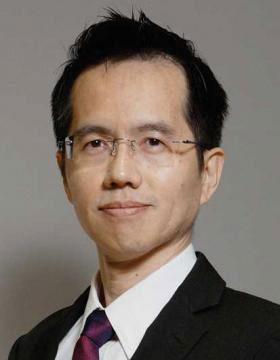
Ill-structured challenges
Engineering students are also increasingly exposed to authentic learning in engineering modules, through a range of assessments and programmes [7]. This holistic approach is intended to prepare and acclimatise students to complexities and obstacles similar to what practising engineers face in real-life fieldwork.
Engineers consider workplace problems inherently ill-structured, due to the reality of incomplete information and unanticipated problems [8]. Real-life problems tend to be messy and complex, and students must appreciate that there is no ‘one size fits all’ solution.
Multiple perspectives need to be considered to solve an engineering problem. Hence, understanding the challenges that students face in transferring their learning from theory to practice is crucial in engineering education.
Real-world engineering problems also tend to be interdisciplinary in nature [9], requiring effective transfer of knowledge between learning modules and other bodies of knowledge.
Transfer of learning is the degree to which learners successfully apply and utilise knowledge and skills in lessons or training [10]. This is, on principle,
In what way(s) does the problem scenario, or any of the tasks, need to be modified to arrive at a solution?
crucial to bridging theoretical learning and workplace application. Solving ill-structured engineering problems improves transfer of learning, bridging the gap between engineering theory and industrial practice [11].
Still, the success of such programmes depends heavily on students being receptive to them. Some studies report assessments of ill-structured problems enjoying an enthusiastic reception by students [12–13], but solving complex and uncertain ill-structured problems can also often prove emotionally taxing to them, inducing strong feelings of anxiety and stress [14].
Intervention (collaboration with ION Mobility)
Engineering students at SIT are regularly exposed to simulation-based learning in several modules of their undergraduate programme.
As part of the Mechanics of Solids (MoS) undergraduate module coursework, an intervention was conducted over a single trimester, in collaboration with industry professionals from ION Mobility, a Singapore-based tech and mobility firm. The goals of this assessment were improving students’ inter-modu-
lar transfer of learning and getting students to engage with realistic workplace problems. This would enhance the students’ competency with simulation tools, in a sustainable and holistic fashion.
An example of a problem scenario students were challenged with is the ‘Seat Basket’, using an electric motorcycle seat basket constructed by ION Mobility. Provided with only limited information, students were given the following tasks:
• Determine the maximum load of the seat basket.
• Subsequently, design solutions for optimising the basket by increasing its load.
• Select ideal materials for construction.
Problem scenarios would feature such ambiguity and would require students, hoping to solve them, to have critical thinking skills and a practicality mindset.
Students received consistent feedback from academics and ION Mobility professionals throughout the intervention, but were not explicitly informed that intermodular transfer of learning was a key objective, while they tackled the assignment.
Research Data: We assessed the student learning process after the intervention period.
Data on the transfer of learning was collected through a Transfer of Learning Questionnaire (TLQ), taken directly before and after the intervention.
TLQ questions were rated on a standard of 1 to 5 on a Likert scale, from Agree to Disagree, assessing learning retention, attitudes to transfer and barriers to transfer.
To evaluate student perceptions of the assessment’s authenticity and provide further insight into their experiences, we used an Ill-Structured Problem Validation Tool (ISPVT). Queries were rated on a 1 to 5 Strongly Disagree to Strongly Agree Likert scale, with one open-ended question.
Responses: The pre-intervention TLQ received 47 full responses from a total of 97 participants, while the post-intervention TLQ gathered 18 full responses from a total of 41 participants. The ISPVT Survey received 20 full responses.
Responses to authentic assessment The authentic assessment received a chequered response from sur-
veyed participants, with many being critical of the problem scenario and graded tasks (Table 1). However, it was understood that the problem scenario could be approached in multiple ways, from several perspectives.
Despite this, learners cited the limited information and lack of structure as areas that needed change.
The lack of information was the primary obstacle to learning transfer. The deliberate lack of clarity in the problem scenario was also poorly received. Many students believed that there was insufficient information provided to perform any modifications, and sought more information on the requirements and conditions for the task. Learners who engaged the ISPVT successfully required instructor help to bridge the content between modules.
The consensus was that the scenario required modification, to engage satisfactorily. When questioned on how the ill-structured problem should be modified, students echoed prior sentiments, recommending more complete and accurate information. Students also suggested providing more structure to the scenario, in terms of requirements and conditions, while modifying the problem scenario to be more accessible to engineering software.
Transfer of learning outcomes
We also collected data regarding any factors that kept the MoS module content separate from material taught in other modules. Out of 20 respondents, 12 felt able to connect inter-module content, citing similar or repeated concepts between modules. Students were mostly able to apply these concepts to classes on engineering materials and mechanics, as well as use MoS as a foundation to understand concepts (like stress tensors) used in future modules.
However, the remaining eight students felt that certain factors prevented them from transferring concepts and material from MoS
to other modules. These students cited difficulty and complexity of the module and coursework, specifically, as reasons for difficulty in transfer. This represents a substantial minority whose perspectives, regardless, are still valuable to the improvement of engineering education.
Others stated that the lack of explicit explanations on connections between modules impeded knowledge transfer (such as pertaining to the concept of fatigue). Although learners were aware of inter-modular transferability of content, the material’s difficulty hindered efforts to use prior experience effectively in problem-solving.
Implications – assessing student reception to holistic education
Despite authentic assessment becoming an increasingly integral part of engineering education, students perceived the lack of clarity and the deliberately open-ended nature inherent in the assignment, less positively.
Many participants struggled to successfully apply the transfer of learning or concepts across different modules. This response was perhaps predictable for students unfamiliar with the assignment – ill-structured problems often incite strong emotions among students [14].
The dominant suggestion by students was to address the lack of instructions and clarity. Indeed, there was a persistent belief among learners that open-endedness and lack of structure was the result of the question being poorly framed by instructors.
This could indicate that such simulation of real-world problems is not yet generally appreciated by Singaporean students as a legitimate and valuable avenue for teaching engineering material. The importance of bridging the gap between theory and practice appears to have been lost or poorly communicated.
Transferring knowledge between modules added further challenges. Most students could recognise how MoS set a foundation for later modules, allowing learners to gain
an understanding of computational learning, while also providing context for other modules.
Although able to make connections to modules with clearer ties to MoS (itself a foundational module), students often resisted perceiving the module material in a more holistic sense and frequently ran into obstacles, doing so.
It should also be observed that students taking MoS, as a foundational module, usually have less experience with simulation software and ill-structured problems, and are expected to increase their competence. Studies involving more experienced students have indicated that students noticeably improved, in regard to these objectives, and became better able to reap the benefits of the assessments of ill-structured problems, following such interventions [15-17].
Instructor guidance was crucial in enabling students to both solve the ill-structured problems and make connections between module content, thereby making the provision of competent feedback and guidance avenues for students new to such challenges, significant.
It is also possible that the deliberately opaque nature of the assignments on ill-structured problems made applying cross-module concepts more difficult. Similarly, the transfer of learning objectives might have enjoyed more consistent success if students were explicitly informed that it was a major objective, particularly considering their inexperience with the curriculum.
Nonetheless, the difficulty in embracing such problem-solving approaches indicates a mindset issue among the student participants (one, possibly exacerbated by Singapore’s education system, prioritising rote learning over practical skills [18]). Such problem-solving is not perceived as being a routine challenge. Students are, instead, over-reliant on familiar, structured questions.
Perceiving uncertainty and incom-
plete information, as being inherent to a poorly structured question, hinders the adoption of an appropriate mindset in solving realistic problems. The difficulty in engaging with realistic problems also demonstrably had a negative impact on the transfer of learning for some SIT students, sabotaging the intention to improve critical thinking and holistic learning.
Pursuing more sustainable practices means that virtual simulation will need to be readily embraced and normalised in educational institutions, as an essential part of learning. However, adoption of a sustainability mindset through simulation will be made more difficult, if learners do not embrace the use of authentic assessments in their syllabus, recognising the value and importance of workplace engineering problems in improving their practical skills.
Evidently, instructors and educators play a key role in normalising this development and guiding students through it, especially early in the learning process. It is recommended that educators work more actively and closely with one another to connect modules and promote learning transfer, instead of presenting them as discretised topic experiences.
This more holistic approach might better urge students to approach coursework in a practical, workplace-oriented fashion, instead of as a series of graded modules. Organising consultations and reflection sessions to connect content from previous modules is one such way to naturally integrate this into the engineering curriculum.
REFERENCES
[1] Sole M, Barber P & Turner I (2022): ‘Sustainable Design: Using Physical Prototypes to Most Benefit Design Students and Environment?’, DS 118: Proceedings of NordDesign 2022, Copenhagen, Denmark.
[2] Thammabut T, Chaijaroen S, Wattanachai S (2020): ‘The Development of Simulation Web-Based Learning Environment to Enhance Ill-Structured Problem Solving for Engineering Students’,
in: Huang T C, Wu T T, Barroso J, Sandnes F E, Martins P, Huang Y M (Eds): ‘Innovative Technologies and Learning, ICITL 2020, Lecture Notes in Computer Science, vol 12555, Springer, Cham.
[3] Li Y, Li X, Zhu D & Guo H (2020): ‘Cultivation of the students’ critical thinking ability in numerical control machining course based on the virtual simulation system teaching method’, IEEE Access, 8, 173584-173598.
[4] Jasti N V K, Kota S & Venkataraman P B (2021): ‘An impact of simulation labs on engineering students’ academic performance: a critical Investigation’, Journal of Engineering, Design and Technology, 19(1), 103-126.
[5] Yau H K & Chan C F (2023): ‘The Investigation of Hong Kong University Engineering Students’ Perception of Help-Seeking with Attitudes towards Learning Simulation Software’, Turkish Online Journal of Educational Technology (TOJET), 22(1), 206.
[6] Suwal S & Singh V (2018): ‘Assessing students’ sentiments towards the use of a Building Information Modelling (BIM) learning platform in a construction project management course’, European Journal of Engineering Education, 43(4), 492-506.
[7] M Božić, S Čizmić, D šumarac Pavlović, J Ćertić and M T Escalas Tramullas: ‘Ill-structured problem solving in a workplace simulation environment: Challenges of the learning experience and skills developed’, 2013 IEEE Frontiers in Education Conference (FIE), Oklahoma City, OK, USA, 2013, pp 928-930.
[8] Gupta V K, Giabbanelli P J, Tawfik A A (2018): ‘An Online Environment to Compare Students’ and Expert Solutions to Ill-Structured Problems’, in Zaphiris P, Ioannou A (Eds) ‘Learning and Collaboration Technologies’, Learning and Teaching, LCT 2018, Lecture Notes in Computer Science, vol 10925, Springer, Cham.
[9] Jonassen D H (2014): ‘Engineers as Problem Solvers’, in A Johri & B M Olds (Eds) ‘Cambridge Handbook of Engineering Education Research’, pp 103118, Cambridge, Cambridge University Press.
[10] Baldwin T T and Ford J K (1988): ‘Transfer of training: A review and directions for future research’, Personnel Psychology, 41, 63-105.
[11] Akinci-Ceylan S, Cetin K S, Fleming R, Ahn B, Surovek A E, Cetin B & Taylor P (2018/06/23/): ‘Bridging the Gap Between Academia and Industry in Approaches for Solving Ill-Structured Problems: Problem Formulation and Protocol Development’, American Society for Engineering Education (ASEE).
[12] Koh C, Tan H S, Tan K C, Fang L, Fong F M, Kan D, Lye S L & Wee M L (2010): ‘Investigating the Effect of 3D Simulation Based Learning on the Motivation and Performance of Engineering Students’, Journal of Engineering Education (Washington D C), 99(3), 237-251.
[13] G K W K Chung, T C Harmon and E L Baker: ‘The impact of a simulation-based learning design project on student learning’, IEEE Transactions on Education, vol 44, no 4, pp 390-398, Nov 2001.
[14] Swenson J, Treadway E & Beranger K (2024): ‘Engineering students’ epistemic affect and meta-affect in solving ill-defined problems’, Journal of Engineering Education (Washington D C), 113(2), 280-307.
[15] Della C N and Tan A (2020): ‘Enhancing Learning of Mechanics of Materials using Finite Element Simulation Models’, Applied Learning Conference, Singapore.
[16] Della C N, Tan A, Lim I, Ang E, Chong D, Chen H, Molina-Cristobal A, Choo J H, Shah J A, Zhang L, Tay N B (2022): ‘Integrating Simulation in the Singapore Institute of Technology-University of Glasgow Mechanical Engineering Curriculum’, Applied Learning Conference, Singapore.
[17] Tan A C H, Della C, Jasin J, Lim L H I, Wang V, Ong C M, Ang M E A & Molina-Cristobal A (2024): ‘Enhancing Engineering Education through Transfer of Learning, Authentic Assessment, and Engineering Simulations’, in ASEE Annual Conference proceedings.
[18] Ng J (2014): ‘The Impact of Children’s Learning during a Curriculum Reform in Singapore’, International Research in Early Childhood Education, 5(1), 11.
[This article is based on a paper presented at the World Engineers Summit (WES) 2023, held in Singapore, from 8 to 10 November 2023. WES 2023 was organised by the Institution of Engineers, Singapore (IES).]
Singapore International Water Week 2024 and CleanEnviro Summit Singapore 2024 conclude on a high note.
This year’s Singapore International Water Week (SIWW) and CleanEn viro Summit Singapore (CESG), which were held at the Sands Expo and Convention Centre, Marina Bay Sands, Singapore, brought together stakeholders from governments, ac ademia, industry and international organisations, to share best prac tices, co-create innovative environ mental and urban water solutions, and generate new business oppor tunities.
Organised by PUB, Singapore’s National Water Agency, and Singa pore’s Ministry of Sustainability and the Environment, SIWW 2024, the 10th edition of the event, was held from 18 to 22 June 2024.
Organised by Singapore’s Na tional Environment, Agency (NEA), CESG 2024, the sixth edition of the event, was held from 19 to 21 June 2024.
CESG 2024 was centred around three pillars - Climate Action, Resource Circularity, and Public Hygiene. The event featured high-level plenaries, conferences, business forums and an exhibition of cutting-edge environmental technologies and services.
Hosting over 30,000 attendees, the two events saw the announcements of strategic partnerships and calls for tenders and research grants, as well as facilitated numerous signings of Memorandums of Understanding (MoUs), with the aim of building a greener, more climate-resilient and sustainable future, amidst scarcity of resources, globally.
To this end, SIWW 2024 and CESG 2024 have paved the way for several significant initiatives, rallying the industries to take ownership to tackle water and environmental challenges. These include:
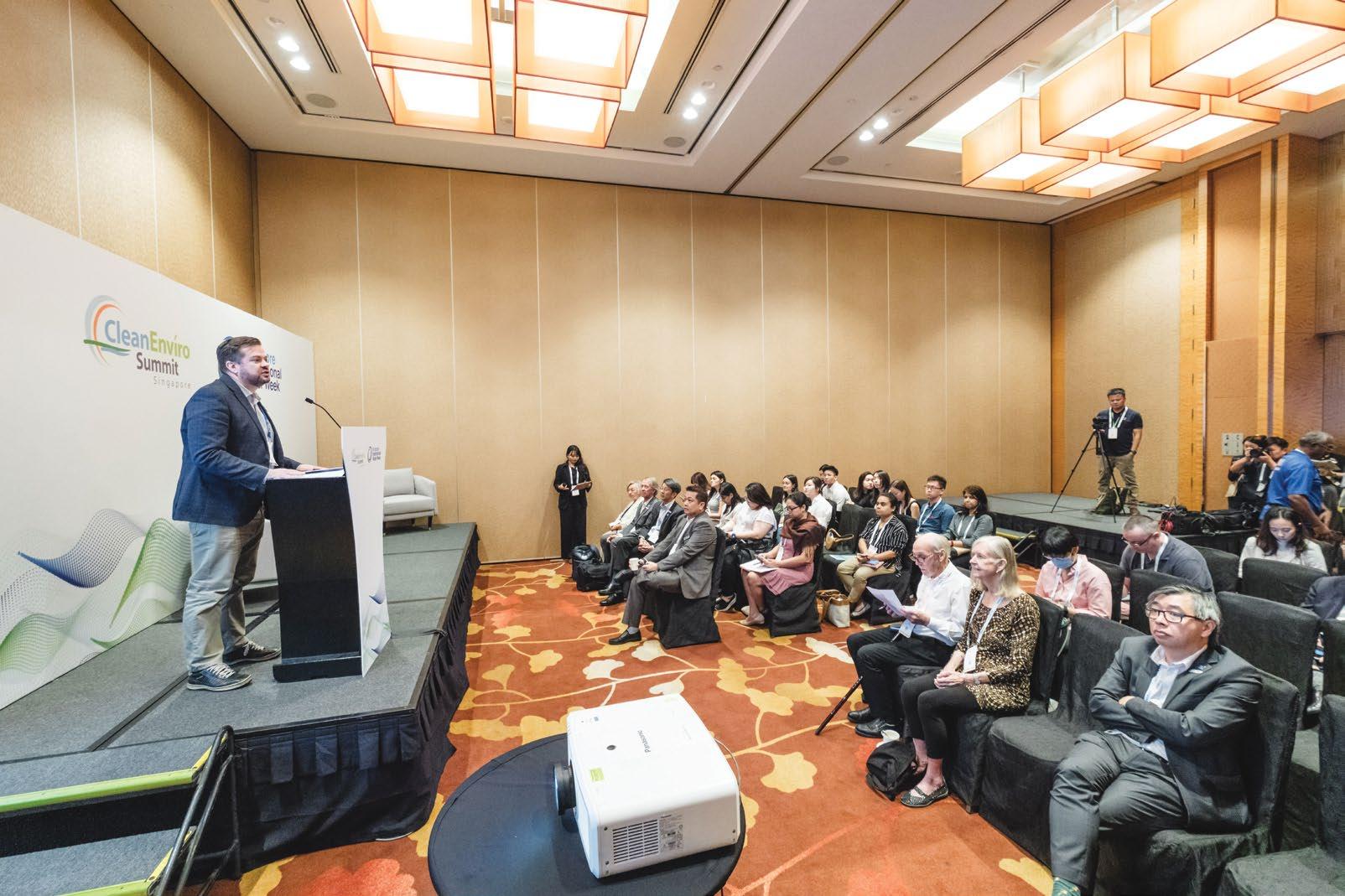

Signings of more than 10 MoUs. Among them is an MoU between PUB and Aarhus Vand, a Danish water utility, to advance knowledge exchange and knowledge transfer, especially in the areas of innovation, energy-efficient used water treatment, resource circularity and climate resiliency.
• Announcement of a tender for the development of a 55 megawatt-peak (MWp) floating solar photovoltaic (FPV) system at Pandan Reservoir. This project will see the installation of floating solar panels on the reservoir’s surface, adding to Singapore’s renewable energy capacity, while ensuring that there continues to be adequate space for recreational water activities in the Pandan Reservoir.
• Announcement of a tender to expand the Changi Water Reclamation Plant. In line with PUB’s efforts to
Resilience Institute (CFI) Singapore and the launch of an open Request-for-Proposal (RFP) by PUB, to seek innovative solutions to support Singapore’s coastal protection and flood management efforts.
At CESG 2024
• A SGD 90 million boost for the environmental services industry, through the Productivity Solutions Grant, to accelerate the adoption of technological solutions and equipment to strengthen innovation, improve productivity and create quality jobs.
• Signing of seven MoUs to advance opportunities in technology, innovation and co-creation of solutions for the clean environment and sustainability space.
• Launch of Enviro Tech Innovation Hub, a ‘living laboratory’ dedicated

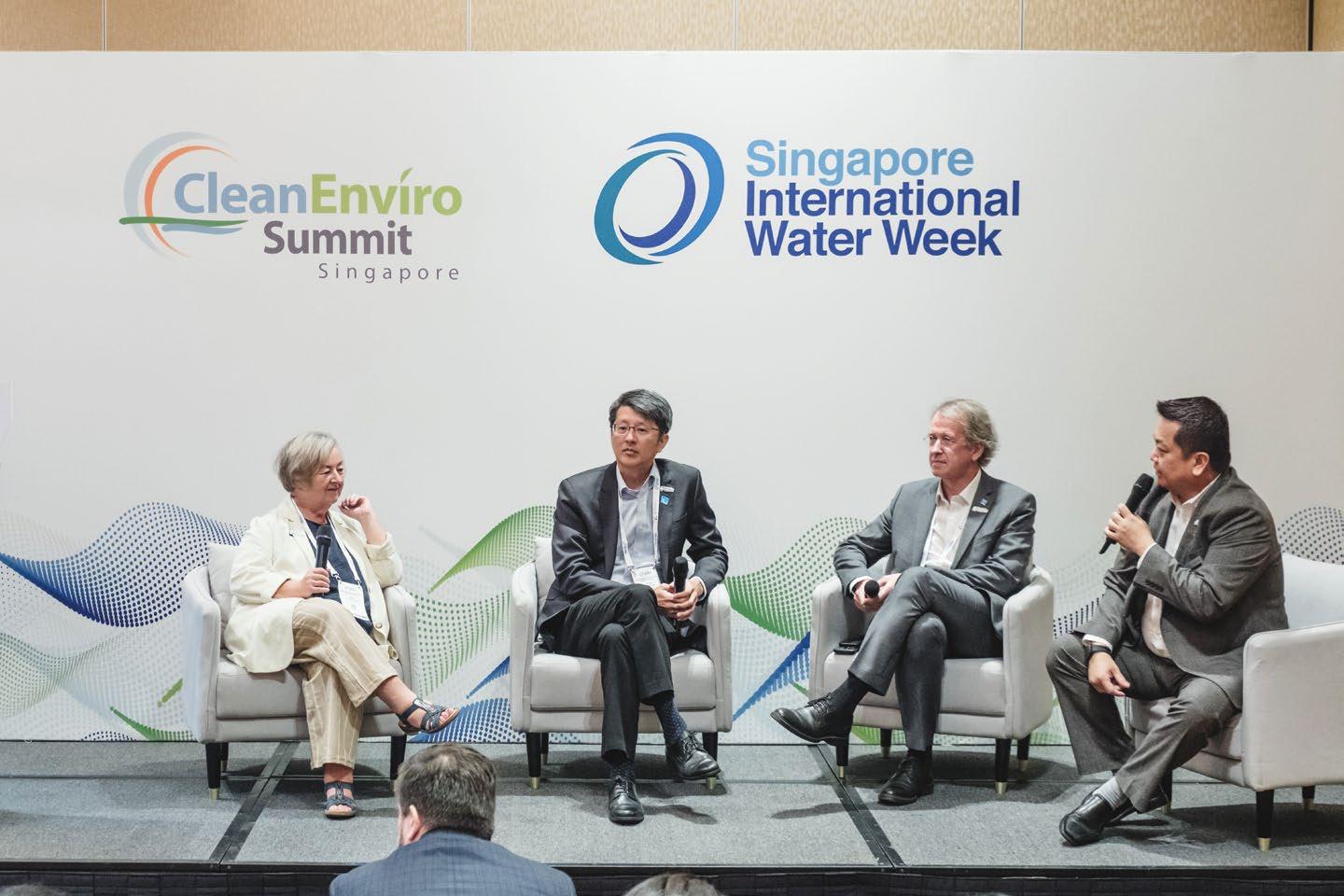
to advancing sustainable environmental cleaning and integrated facilities management, by co-creating and test-bedding innovative solutions, planning and carrying out initiatives for workforce upskilling and talent development.
• Launch of the new Closed-Loop Partners Network by SembWaste, a first-of-its-kind platform in Singapore, aimed at fostering industry partnerships to advance a circular economy.
• Plans by Modern Asia Environmental Holdings (MAEH), a subsidiary of DOWA Eco-System Co Ltd, to extend material worth, through reuse, re-processing and re-manufacturing, to support the broader goal of sustainable urban development.
• Exploration of new technologies for waste management via a Request for Information (RFI) to gather insights into the industry’s interest in and commercial viability of alternative disposal technologies to treat mixed municipal solid waste.
• Strengthening efforts to nurture young talents in the environmental services industry, with nine Polytechnic and ITE students awarded scholarships under the NEA-Industry Scholarship Programme and recognising the pioneer batch of 26 Youth for Environmental Sustainability (YES) leaders who spearheaded 12 impactful projects and reached out to over 18,000 people to raise greater awareness on sustainability concerns.
PIVOTAL ROLE OF SIWW AND CESG Climate adaptation is a new key pillar of SIWW 2024, specifically the issue of addressing coastal and flood resilience. Ms Grace Fu, Minister for Sustainability and the Environment and Minister-in-charge of Trade Relations, made the call for closer partnerships between the public and private sectors in addressing coastal and flood risks, at the inaugural Coastal and Flood Resilience Leaders Summit.
Serving as a three-way intermediary between the industry, institutes of higher learning, and government agencies, the Singapore Water Association will be launching a new Coastal Protection Chapter to foster collaboration among companies and support the implementation of coastal protection infrastructure.
The Sustainability Summit at CESG 2024, themed ‘Towards a Net Zero City’ convened industry leaders to discuss strategic policies, innovations and international collaborations, for advancing low carbon transitions and addressing environmental challenges. Plenaries focused on accelerating climate action and decarbonisation ahead of COP29, highlighting resource resilience and key sustainability issues across the Asia Pacific region.
In her opening address, Dr Amy Khor, Senior Minister of State for Sustainability and the Environment, reiterated Singapore’s commitment to sustainability and the importance of sustainable practices, to secure a vibrant and healthy future for generations to come.
The managing directors of both events highlighted the pivotal role of collaborative platforms such as SIWW and CESG, to continue to move the dial for water management and global sustainability.
“As a unique global platform that brings together governments, cities, utilities, and industry from the region and the world, the 10th edition of SIWW marked a significant milestone as one of the most successful editions yet. We are confident that the knowledge-sharing, thought leadership and strategic collaborations that came forth from the
event will continue to drive actionable solutions towards solving the world’s most pressing urban water and associated climate challenges,” said Mr Ryan Yuen, Managing Director of SIWW.
“As we progress towards our national and global sustainability goals, we continue to navigate the complexities of climate change and sustainability. This is why platforms such as CESG are crucial in forging pathways for collaboration and innovation. Together with our global partners, we will be able to innovate new solutions and technologies that not only mitigate environmental impacts but also set new benchmarks for global sustainability practices,”
said Mr Kwok Wai Choong, Managing Director of CESG.
The next edition of SIWW and CESG will be held in 2026.
Singapore International Water Week
As one of the premier global platforms, the biennial Singapore International Water Week (SIWW) gathers thought leaders, experts and practitioners from governments, cities, utilities, and industry to share knowledge and best practices on innovative water, coastal and flood solutions, and foster partnerships to tackle urban water and associated climate challenges.
Organised by PUB, Singapore’s
National Water Agency and Singapore’s Ministry of Sustainability and the Environment, SIWW flagship programmes include the Lee Kuan Yew Water Prize, Leaders Roundtable and Summit, Water Convention, Water Expo, Thematic and Business Forums and Technical Site Visits.
Organised by Singapore’s National Environment Agency (NEA), the biennial CleanEnviro Summit Singapore (CESG) is a global platform for thought leaders, industry captains and policy makers to convene, connect as well as to consider solutions for enabling a sustainable and clean environment.
Guest-of-Honour, Mr Tharman Shanmugaratnam, President of the Republic of Singapore, presented the Lee Kuan Yew Water Prize 2024 to Professor Gertjan Medema at the Award Ceremony and Banquet held at The Clifford Pier, The Fullerton Bay Hotel, on 18 June 2024.
Professor Medema received the award for his breakthrough research and discovery, and significant contributions, in the field of wastewater-based epidemiology (WBE). His research revolutionised the application of WBE for virus detection in wastewater during the COVID-19 pandemic.
With the emergence of COVID-19 in early 2020, Professor Medema, a renowned microbiologist and an expert in water quality and health, and his team, recognised the need for early detection and monitoring, and began collecting wastewater samples across the Netherlands to test for the SARS-CoV-2 virus.
He quickly focused his team’s research on curbing the spread of the virus in the community through wastewater surveillance. The results were promising when evidence of the virus was detected in the wastewater of several cities even before they officially reported it.
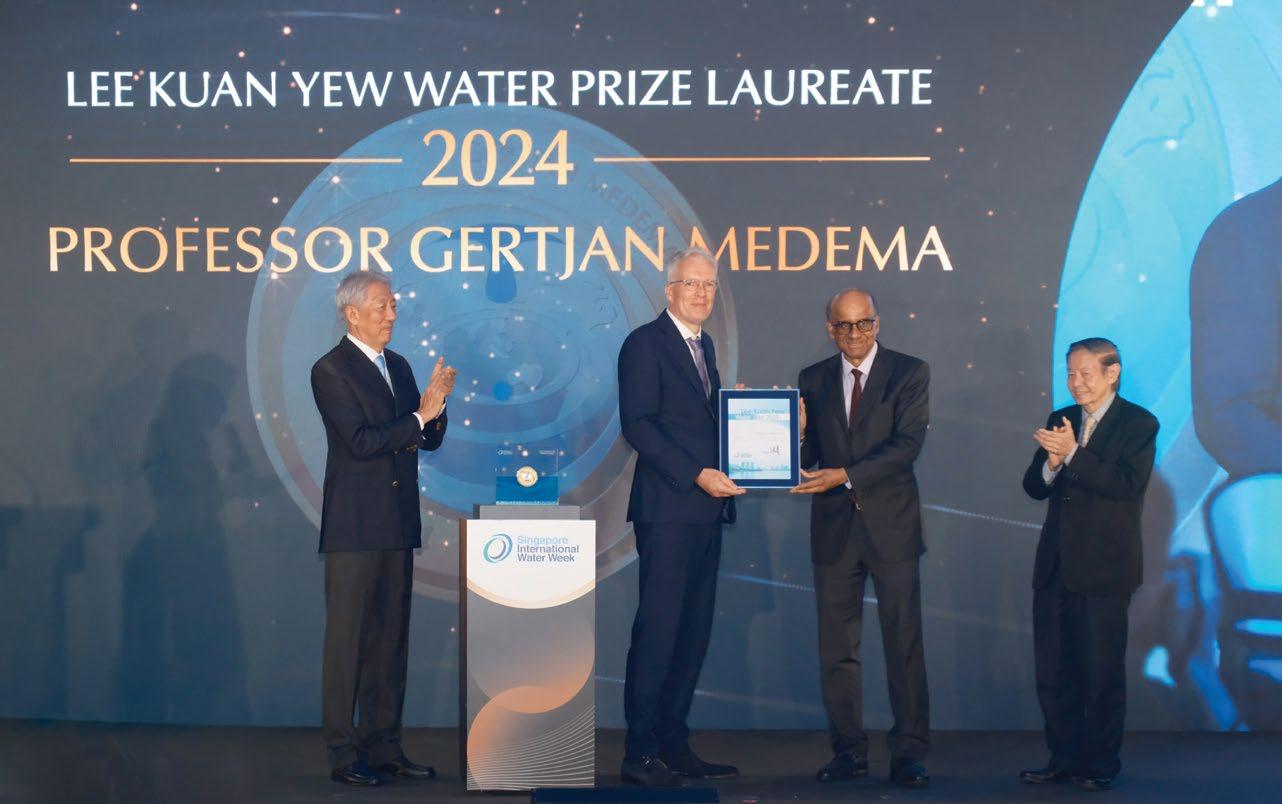
Foundation. Image: SIWW2024.
Professor Medema’s work has been foundational in establishing WBE as a tool for public health surveillance during the pandemic. The impact of his work was evident from his first publication in this area, which garnered substantial attention with over 1,400 citations and more than 34,000 views between 2020 and 2023.
Wastewater surveillance has since been adopted worldwide as a powerful tool for the early detection of diseases like SARS-CoV-2, even before cases are reported through clinical testing. This, in
turn, provides valuable insights into the prevalence of the virus in a community, and a proven cost-effective and non-invasive method for tracking the spread of the disease. Launched in 2008, the Lee Kuan Yew Water Prize honours outstanding contributions by individuals or organisations towards solving the world’s water problems by developing or applying innovative technologies or implementing policies and programmes which benefit humanity. The Lee Kuan Yew Water Prize is one of the key highlights of SIWW.
Launch of new research projects and partnerships.
This year’s Singapore International Water Week (SIWW) saw active exchanges by global stakeholders on best practices on flood mitigation and coastal protection, under the new pillar of climate adaptation.
At the Coastal and Flood Resilience Leaders Summit, the award of the second tranche of research projects under the Coastal Protection and Flood Resilience Institute (CFI) Singapore was announced.
PUB, Singapore’s National Water Agency, also launched an open Request-for-Proposal (RFP) to seek innovative solutions to support Singapore’s coastal protection and flood management efforts. These milestones further cement Singapore’s commitment to developing capabilities and enhancing coastal protection and flood resilience.
Building on the foundational work of the first tranche, the second tranche of eight projects will focus on innovative solutions and advanced technologies to facilitate the implementation of coastal protection infrastructure. The awarded projects encompass a broad spectrum of research areas including monitoring and simulation of the coastal environment and impacts, as well as assessing coastal engineering solutions and nature-based approaches for coastal defence.
For example, one of the projects, under the National University of Singapore (NUS), will develop anchored floating breakwaters which are adaptive, allowing for the floating breakwaters to be incrementally raised to adapt to rising sea levels. The breakwaters also have the potential to tap on wave and tidal en-
Research area
Coastal Science Research
Coastal Science Research
Monitoring, Prediction and Digitalisation of Coastal Environment
Innovative Engineering Solutions
Innovative Engineering Solutions
Integrated Nature-based Solutions
Integrated Nature-based Solutions
Integrated Nature-based Solutions
Project title
Model development and quantifications of coupled near-shore processes impacted by climate change
Enhancements in the predictions of sediment transport around Singapore coastal waters
Network of experimental catchments for understanding runoff formation and flood risk
Smart and multifunctional floating structures for coastal protection and flood control
Eco-cement enhanced methods for beach erosion control and beach land restoration through soil accumulation
An Integrated Coastal Ecosystem Model (ICEM) to assess the environmental impacts of anthropogenic activities and climate change on hybrid solutions
Promoting hybrid solution resilience by optimising hydrodynamical and structural influences on coral larval attachment to reefs and sediment clustering amid seagrass
Maximising the beneficial environmental effects of tropical hybrid shorelines - (MaxBETH)
Tranche 2 research projects awarded under CFI Singapore.
ergy to harvest green energy.
Another project, by Nanyang Technological University (NTU), aims to design barriers made from jute, a composite of plant fibre and calcium waste. These barriers could be deployed at beaches to protect the shoreline from erosion and restore beaches through soil accumulation, serving as a sustainable alternative to engineering solutions.
Launch of new Coastal Protection Chapter by Singapore Water Association
Recognising that coastal protection is an emerging sector, the Singapore Water Association (SWA) will launch a new coastal protection chapter, to foster collaboration among companies and support the implementation of coastal protection infrastructure.
In addition, SWA will promote and link Singapore’s coastal protection and flood management industry to the international network, enhancing knowledge-sharing and collaboration in the sector.
In conjunction with the launch of a new coastal protection chapter, SWA will sign a tripartite Memorandum of Understanding (MoU) with CFI Singapore and the Forum for Climate Change Adaptation (FCCA). This MoU aims to bring together expertise from both industry and academia, and will foster closer collaboration.
PUB also launched an open Request-for-Proposal (RFP) to seek innovative and forward-looking solutions to support Singapore’s coastal protection and flood management efforts.
Mr Alex Bettinardi, Product Management Leader, De Nora Water Technologies, outlines some of the challenges and explains how some of the company’s technologies and products can help to address them.
De Nora is an Italian multinational company specialising in sustainable electrochemical and water treatment technologies, and in the emerging green hydrogen industry. The company was an exhibitor at SIWW 2024. Mr Alex Bettinardi
The Singapore Engineer (TSE): What are the main water-related issues in the region?
Alex Bettinardi (AB): The Asia-Pacific region faces critical challenges in ensuring safe drinking water, sanitation, and hygiene (WASH), due to widespread contamination and pollution. These issues are exacerbated by rapid urbanisation, population growth and inefficient water resource management practices.
The region is home to over 50% of the world’s population but has less freshwater than any other continent except Antarctica. Two-thirds of the global population growth is occurring in Asia, with the urban population expected to grow by 60% by 2025, intensifying water scarcity, pollution, and inadequate access to safe drinking water and sanitation facilities.
The presence of contaminants of emerging concern, in water, including per- and poly-fluoroalkyl substances (PFAS) and micropollutants has further highlighted the urgent need for advanced water management solutions to protect public health and ensure clean drinking water.
The issue of PFAS has also gained significant attention, especially since April 2024, when the United States Environmental Protection Agency (EPA) announced the Final National Primary Drinking Water Regulation, establishing legally enforceable levels for PFAS in drinking water.
According to the EPA, at least 70 million Americans are exposed to
PFAS-contaminated water, while a substantial portion of the nation’s tap water is affected by PFAS, according to studies by the US Geological Survey (USGS).
These findings highlight the urgent need for effective water management solutions and advanced technologies to protect public health and ensure clean and safe drinking water in the region.
TSE: What measures can be taken to address these issues?
AB: It is important to note that PFAS is quickly becoming recognised as a public health threat, with growing activity in state and federal regulations such as in the US. In Singapore, PUB, Singapore's National Water Agency, has been monitoring PFAS in Singapore's drinking water, through its comprehensive water quality monitoring programme.
It is known that PFAS levels in Singapore’s drinking water remain below the limits set by the EPA. However, this is not the case in other countries in the Asia-Pacific region, where PFAS is still not regulated or even monitored.
To address the water-related issues in the Asia-Pacific region, especially regarding PFAS and other emerging contaminants, comprehensive research and development are essential. Investment in global research projects and collaborations with universities and engineering consultants is crucial to understanding and mitigating these complex contaminants.
For instance, De Nora's involvement in projects like Life CASCADE

in Europe and partnerships with local institutions in Asia focus on pre-treatment, effective removal, and destruction of PFAS, ensuring scientifically sound and practical solutions. This partnership approach highlights the fact that everyone, from industrial companies to municipal organisations, has a responsibility to consider solutions that allow them to reduce their own PFAS releases into the environment.
De Nora is committed to providing solutions that ensure safe drinking water from treated groundwater sources, while also supporting sustainable water management practices, through its extensive product portfolio and 100 years of experience. Additionally, the company promotes water reuse technologies to recycle wastewater and reduce dependency on groundwater.
TSE: How can technology play a role in fighting the contamination of water?
AB: Technology plays a pivotal role in addressing water contamination, as it provides advanced solutions to effectively treat and remove harmful substances.
De Nora is one of the few water treatment companies in the world that can claim expertise and a portfolio across a complete range of disinfection and oxidation technologies. This allows De Nora to select the most appropriate solution for a customer’s given need, rather than what the company has available to sell.
Additionally, these can be com-
bined for multi-barrier treatment approaches, where complex and hard-to-treat contaminants are concerned.
For example, DE NORA TETRA ABF combines treatment by ozone with biologically active filtration for micropollutant and disinfection byproduct reduction.
The continued evolution of these treatment practices, in conjunction with new and improved technologies, is helping to drive towards the goal of ensuring safe and clean water for communities worldwide.
TSE: Could you provide a brief history of De Nora, highlighting the company’s activities in Singapore and the region?
AB: De Nora has a long history of leadership in electrochemical technologies and water treatment solutions in the region. Over the decades, the company has continuously innovated to address evolving water challenges.
In Singapore and the surrounding region, De Nora has been instrumental in providing advanced water treatment solutions for municipal water plants, and industrial wastewater management and desalination projects. Our presence has significantly contributed to improving water quality and ensuring a sustainable water supply for various communities.
De Nora has recently won and installed a number of CECHLO systems in the APAC region, including for the Hong Kong WSD, and Goryeong Water Treatment Works in Korea, and is currently commissioning an installation in Mt Isa, Australia. The latter is located in a remote part of Australia and is serving, as a hub and spoke arrangement, to produce and distribute fresh hypochlorite to local communities, instead of shipping hypochlorite in bulk from long distances.
In Hong Kong, De Nora designed and installed a unique hybrid system combining on-site electrochlorination and chlorine gas feed technologies to address the chlorine safety management challenge in
one of the most populated cities in China. The system managed to eliminate disinfection safety risk from liquid chlorine, and provided stable, sustainable and greener chlorine management. This system is now fully operational in all 10 water treatment works in Hong Kong, and it is the largest installation of the CECHLO-MS systems in Asia.
Late last year, De Nora won one of the largest water disinfection projects in Asia, at the Johor River Water Works, the largest waterworks located in Malaysia and one of Singapore’s important water sources, where we replaced the existing liquid chlorine and ammonia system with ClorTec 2250 on-site hypochlorite generator from De Nora, minimising the chlorate disinfection by-product.
We have also made significant strides in the region, with projects like the new electrode production line in Suzhou and various installations across Korea, Australia and Hong Kong, underscoring our growth and commitment to meet increasing demand.
TSE: What are some of the products and technologies that De Nora can offer and what specific challenges do they address?
AB: De Nora offers a range of products and technologies specifically designed to tackle contaminants of emerging concern.
Addressing water-related issues, especially that of PFAS and other emerging contaminants, requires comprehensive research and development. We invest in partnerships to understand and mitigate complex contaminants such as PFAS, from pre-treatment to removal and destruction, based on decades of expertise in complex contaminant removal and partnerships with academia and industry.
De Nora SORB standardised contaminant removal systems utilise both ion exchange (IX) and granular activated carbon (GAC), for the treatment of a wide range of contaminants, including PFAS, to meet regulatory requirements, maximise
uptime, promote ease of operation and reduce operational costs.
De Nora has also been pioneering advancements in water treatment with ozone and has the longest experience of all manufacturers. Some recent areas of concern are the removal of micropollutants and 1,4-Dioxane, from water sources –an application where De Nora Capital Controls Ozone/AOP and UV/ AOP systems have been successfully applied.
Additionally, De Nora ClorTec systems utilise electrolysis to generate sodium hypochlorite to treat contaminated water, while minimising the production of chlorate, through unique features and as a result of generation on-site, as and when needed.
TSE: Can you elaborate on how De Nora technologies effectively and sustainably remove water contaminants like PFAS and other contaminants of emerging concern?
AB: Our technologies are designed to ensure effective and sustainable water treatment. We minimise chemical usage by employing advanced oxidation and electrochemical treatments, which reduces the need for additional chemicals and lowers environmental impact. Our solutions ensure high efficiency with lower energy consumption and require minimal maintenance, providing consistent performance over time.
Moreover, our technologies employ proven methods of contaminant removal to reduce PFAS in water sources to a non-detectable level, including ion exchange (IX) and granular activated carbon (GAC). De Nora’s SORB contaminant removal systems are proven to be up to 99.99% effective, with modernised features designed to streamline processes from installation to operation. By leveraging these advanced technologies, De Nora helps ensure safe, clean and sustainable water supplies, addressing both current and emerging water challenges, effectively.
This is expected to accelerate tenants’ deployment of carbon-saving solutions.
JTC, with the support of Enterprise Singapore (EnterpriseSG), has launched a new innovation call to support Jurong Innovation District (JID) tenants and lessees in their decarbonisation journey.
Known as the Decarbonisation Living Lab @ JID Innovation Call, it will bring JID companies, private sector solution providers and public sector agencies together to co-develop, test and implement solutions to reduce the companies’ carbon emissions.
About SGD 4 million has been set aside, under this innovation call, to support the co-innovation of new solutions that will lower JID tenants and lessees’ water and energy consumption, reduce their waste output, and decrease the district’s carbon footprint, as a whole.
Scope 3 emissions comprise the majority of the total carbon emissions of JTC, as an industrial landlord. These emissions arise from sources not owned or controlled by JTC but by JTC’s tenants and lessees.
While JTC has embarked on its decarbonisation journey to reduce its carbon emissions, it is now partnering its customers to decarbonise their operations and, hence, reduce the industrial estate’s Scope 3 emissions.
The carbon footprint of manufacturing industries is large. However, it is typically more challenging for an industrial landlord to reduce Scope 3 emissions. Unlike Scope 1 and 2 emissions, it requires collaboration and coordination with upstream and downstream supply chain vendors and service providers. A deep understanding of tenants’ operations and consumption patterns is also required.
The Decarbonisation Living Lab @ JID Innovation Call allows JTC to partner with customers who
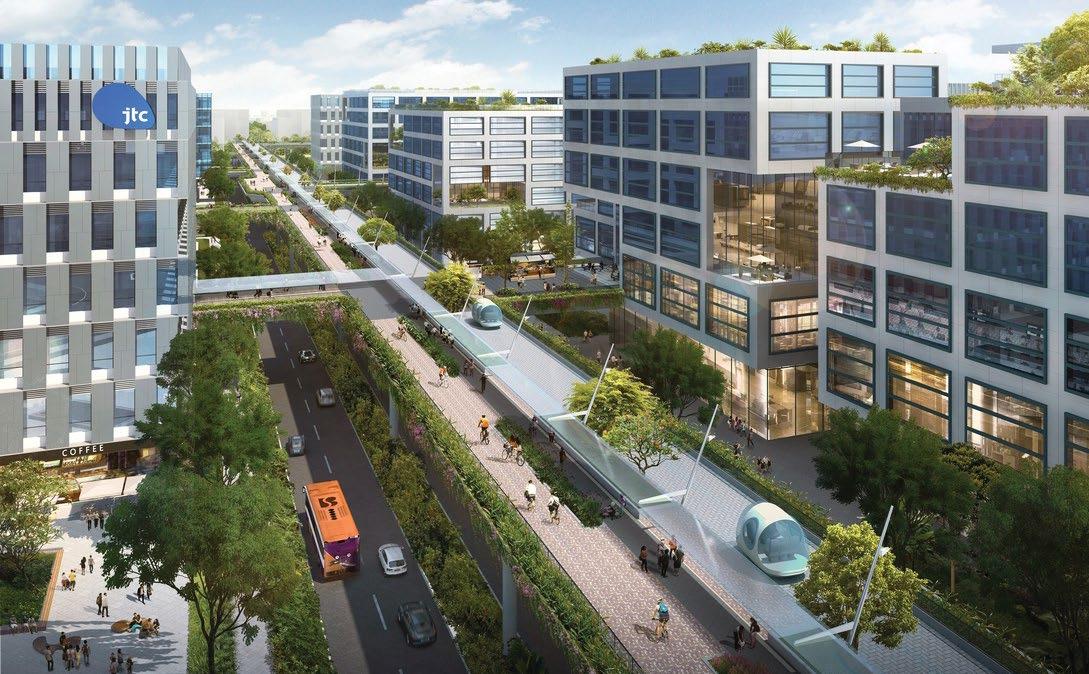
have firsthand knowledge of their sustainability challenges, thus increasing the likelihood of successful implementation, adoption and commercialisation of carbon-saving innovations at JID.
Specialising in the advanced manufacturing value chain, from research and development to prototyping, commercialisation and production, JID companies can contribute to and benefit from test bedding and trials of new technologies to help them decarbonise. If successful, JTC plans to replicate the model in other estates, to reduce its Scope 3 emissions.
The concept of the living lab is not new to JID which was conceived as Singapore’s largest living lab to test and develop future ideas. CleanTech Park in JID, for instance, has hosted 18 test beds by tenants and partners, including for self-driving vehicles, smart robots and assistive technologies.
Innovation call
Through the innovation call, JTC will crowdsource proposals in four areas, to trial and deploy carbon-saving solutions at the advanced manu-
facturing hub. The ideas, which seek to remove the existing roadblocks to moving the district towards Singapore’s net-zero goals by 2050, include:
• Ideas to reduce energy consumption of tenants and/or lessees.
• Ideas to reduce waste generated and/or waste being transported to landfills.
• Ideas to reduce the amount of water used for companies’ operations.
• Novel approaches to mitigating carbon emissions on site, including methods for energy generation and/or carbon capture, storage and utilisation.
JID companies can participate in the innovation call by contributing a problem statement for solution providers to respond to. They can also work with a solution provider to solve a particular challenge in these areas.
With an objective of replicating and scaling up the deployment of the solutions, novel proposals with a high technology-readiness level for eventual adoption and deployment will be awarded. Other criteria include commercial viability and benefits to Singapore’s economy.
The proposals will be evaluated by a multi-agency panel, including JTC and EnterpriseSG. JTC plans to award the projects by early 2025, and begin the testbedding thereafter.
Mr John Kiong, Acting Director, Sustainability Department, JTC, said, “From inception, JID embodies the Living Lab ethos, where pilots and demo projects, using its buildings and infrastructure as a testing platform, are readily welcomed. As the estate strives towards operational net zero, the Living Lab programme continues with a greater emphasis on sustainability-related innovation.”
“With the innovation call, JID will be the district where innovative ideas can be tested for proof-of-concept, deployed at the building or district scale, before reaching commercialisation scale. Together with our ecosystem, we hope to engender meaningful projects that can contribute to the overarching sustainability vision for JID, in support of Singapore’s net zero ambition,” he added.
Ms Magdalene Loh, Director, Urban Systems & Solutions, EnterpriseSG,
said, “As sustainable development gains momentum globally, there is an increasing need to integrate sustainability into business operations to build a competitive edge, while reducing impact to the environment.”
“With the new Decarbonisation Living Lab @ JID Innovation Call, innovative startups and SMEs can collaborate with corporates in JID to develop and test novel carbon-reduction technologies. This not only contributes to the decarbonisation goal of the district, but also provides startups and SMEs with opportunities to develop market-ready solutions and establish early track records that can help them access green economy opportunities beyond Singapore,” she added.
JID’s vibrant ecosystem of enterprises in smart city and urban solutions includes Surbana Jurong, whose campus serves as an incubator for real-world urban solutions. The SJ Campus is a GM Platinum SLE and Singapore’s first WELL Core Certified at Platinum level building.
Mr Praveen Chandrashekar, Di -
rector, Sustainability & Resilience, Asia, Surbana Jurong, said, “Participating in the innovation call aligns with Surbana Jurong Group’s vision for its living lab campus to catalyse practical smart and sustainable solutions that seed innovations to help our clients achieve their net zero goals.”
The Energy Research Institute at NTU (ERI@N), a centre-of-excellence for advanced research, development and demonstration of innovative energy solutions, is a JID tenant and key ecosystem partner.
Dr Faizal Zulkefli, Programme Director, Sustainable Built Environment, ERI@N, said, “As a leading research institute that focuses on translational research, we have collaborated with JTC on several successful testbed projects which have been implemented across various locations around Singapore. With the new Decarbonisation Living Lab @ JID Innovation Call, we are excited to continue our partnership with JTC to develop and deploy innovative sustainability solutions that will benefit society, in line with the NTU Sustainability Manifesto.”
The National Environment Agency (NEA) is providing a new tranche of SGD 90 million in funding support to the Environmental Services (ES) industry through the Productivity Solutions Grant (PSG).
Senior Minister of State for Sustainability and the Environment, Dr Amy Khor, announced at the CleanEnviro Summit Singapore that eligible companies can apply for funding support in the fourth quarter of this year (Q4 2024). Funding support will be made available throughout the grant application period until 31 March 2027, together with an updated list of supportable equipment and solutions.
The grant was first made available to the environmental services industry in September 2018, with SGD 30 million set aside for eligi-
ble companies. Subsequently, more than SGD 30 million was also provided as additional funding support to the industry. To-date, NEA has approved close to 2,000 applications, and completely fulfilled the initial funding that was set aside for the ES industry.
Supported by the grant, more than 600 companies have adopted equipment technologies and digital solutions. Examples of solutions that were adopted, using this grant, include floor cleaners and scrubbers (both autonomous and ride-on versions), sweepers (autonomous and ride-on), smart litter bins, handheld mini 2-in-1 vacuumer and scrubber, and steam cleaners.
The environmental services industry plays an important role in providing essential services to keep
Singapore clean and liveable. Innovation and technology remain at the forefront of driving transformation and capability development in the industry.
Aligned with the Year of Public Hygiene, the additional funding is timely and useful to enhance industry capability, by further accelerating the adoption of technological solutions and equipment. It will also spur companies to improve productivity, strengthen capabilities and build a skilled workforce. NEA will continue to reach out to businesses to share relevant initiatives and programmes, under the Environmental Services Industry Transformation Map, that will enable the industry to grow competencies and develop a skilled and resilient workforce.
Ensuring a comfortable experience while reducing the carbon footprint.
The latest technology from Johnson Controls, a global leader in smart, healthy and sustainable buildings, enabled millions of fans who attended the Paris Olympics 2024 to have a comfortable experience at some of the smartest and most energy-efficient stadiums in Europe.
By integrating advanced building automation systems, HVAC and fire suppression technologies across eight venues, the company not only helped the International Olympic Committee to prioritise safety and operational efficiency, but also contributed to the committee’s ambitious goal of reducing the event’s carbon footprint by 50%, compared to previous Olympic Games.
Achieving this goal required making the building infrastructure behind the games’ venues more energy-efficient and sustainable.
For example, two of Johnson Controls’ latest York 3.3 MW industrial chillers are in operation at the new La Chapelle plant, located in the Adidas Arena sports and cultural complex.
As the 12th power plant in the city of Paris’ cooling network, it meets the cooling needs of the Adidas Arena and the surrounding area. This equipment provided sustainable and energy-efficient cooling at one of the flagship sites of the Olympic Games.
“With temperatures rising year on year and heatwaves becoming the norm, the need for sustainable cooling technology is critical to ensure optimal conditions in venues, while minimising the impact on the planet,” said Mr Marc Vandiepenbeeck, CFO and EMEALA President for Johnson Controls.
“Chillers are one of the most energy-consuming pieces of equipment in a building and represent an important opportunity to cut ener-
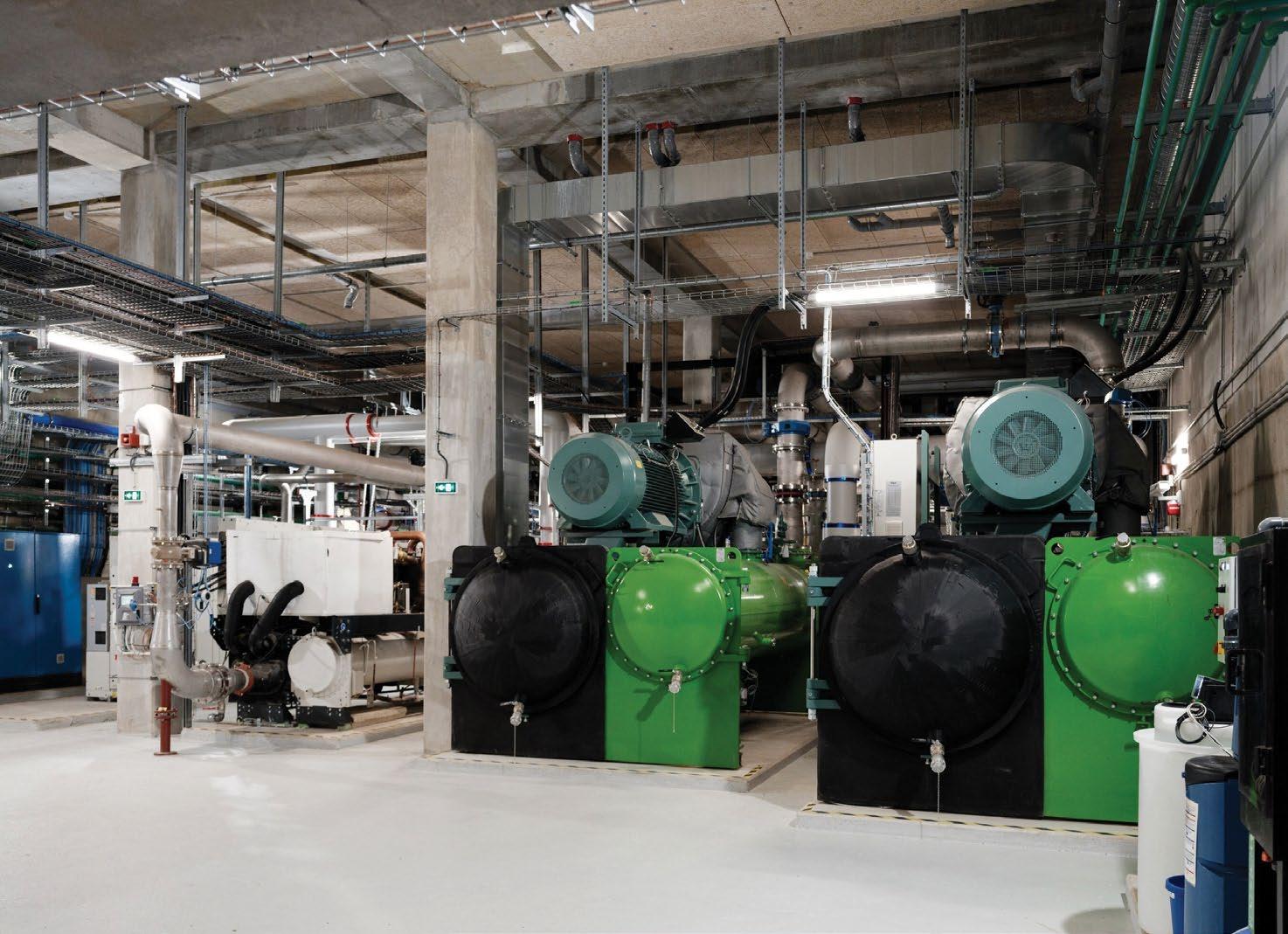
gy use and cost, while minimising carbon footprint and delivering a healthier indoor environment,” he added.
A further example is a renowned tennis stadium where the Johnson Controls Metasys building automation system links the most vital building equipment including HVAC, lighting control and energy management.
The system controls and monitors performance and provides real-time data, so that facility managers can identify potential issues, make adjustments and ensure the stadium is running as efficiently and sustainably as possible.
“We are proud to work with these prestigious venues and help our customers achieve their desired outcomes in energy efficiency, carbon reduction emissions, safety, security and building management. Our expertise in smart stadiums
and large venues has made Johnson Controls the partner of choice for stadiums across the world and we continue to innovate in this space to further elevate the fan experience,” Mr Vandiepenbeeck continued.
Johnson Controls drives fan engagement, operational efficiency and sustainability with innovative building technology at sports and entertainment venues across the globe.
The company provides smart buildings solutions to Intaleq in Doha, Fiserv Forum in Milwaukee, O2 Arena in London, Allegiant Stadium in Las Vegas, Chase Center in San Francisco, Borussia Dortmund at SIGNAL IDUNA PARK, and more.
It offers its full range of technologies for this sector, including its OpenBlue digital platform, building automation system, HVAC, as well as fire detection and suppression.
The expected benefits include improved safety, reliability and uptime.
Steel Dynamics Heartland (SDI Heartland), one of the largest steel producers in the US, worked with ABB Electrification Service, to modernise its ageing substation equipment.
SDI Heartland chose ABB to design, build and install new switchgear doors, controls and protection relays, at its 18-breaker substation. Repairing the vintage relays was proving to be a challenge. Replacing them with new technology was essential to ensure reliable power supply to the mill and avoid costly downtime.
“Servicing their ageing relays has been an important part of our work at the Heartland operation. So, when it came time to modernise their gear, we were fully aware of the challenges they faced and the importance of delivering a safe, on-time installation,” said Mr Tim Gentry, Business Development Manager for ABB.
SDI Heartland opted for ABB’s Relion 615 series as the new protection relays. These compact and versatile devices offer protection, control, monitoring and supervision, all in one relay. In addition, for increased safety, the relays include arc flash protection, based on optical arc flash detection with fibre-optic light sensors, tripping at arc faults in milliseconds.
To demonstrate the performance and capabilities of the new Relion relays, ABB initially replaced two of the old unreliable relays in SDI Heartland’s substation. The successful smaller-scale project gave SDI Heartland the confidence and conviction to move forward and replace the remaining 16 relays in the medium-voltage line-up.
Beyond a modern set of protection and control relays that help keep the substation operating at optimal conditions, ABB’s Relion 615 series relays also include com-
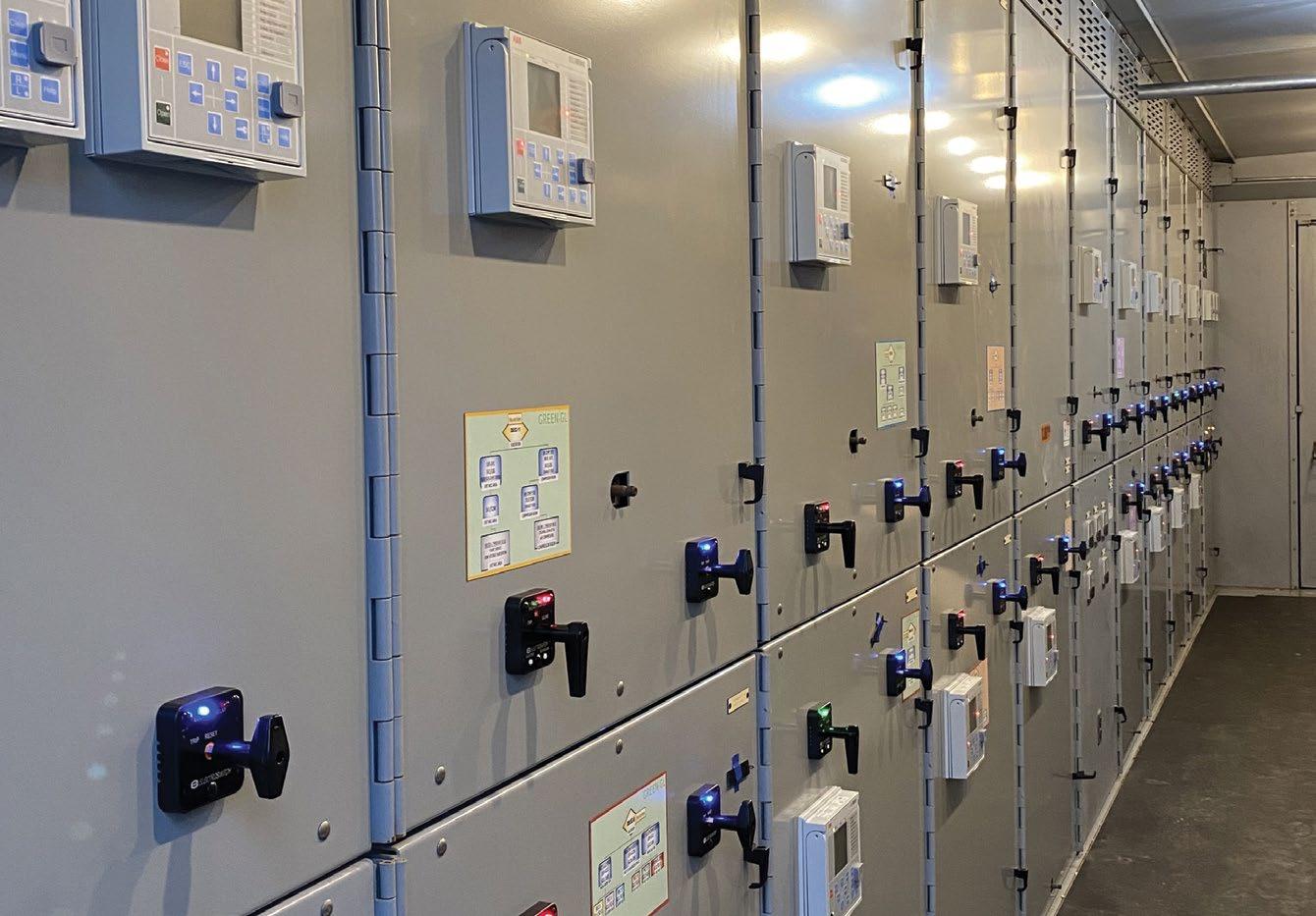
munications capabilities, enabling SDI Heartland to monitor their main relays and understand what each of their feeders is doing.
The new Relion relays have a large, user-friendly graphic display, and now SDI Heartland’s technicians are able to continuously see the status of their equipment, making it easier for them to get detailed information and make better-informed maintenance decisions to further prevent costly downtime.
The Heartland Division has the annual capability to pickle and cold-reduce one million tons of steel, with the ability to galvanise 360,000 tons. The enhanced communication capability, combined with the confidence of modern relay technology, will be critical as SDI Heartland grows.
The company is currently undergoing an expansion project that has added a second galvanising line and a paint line. SDI Heartland has once again selected ABB for the new switchgear and commissioning work
that will support these new lines.
“I have always been impressed with ABB and their commitment to quality, safety, and service. The experience and expertise of their field engineers are the reason we consistently choose them to help us keep our electrical assets operating as effectively and efficiently as possible,” said Mr Dave Fulford, Engineering and Maintenance Manager with SDI Heartland.
According to ABB, its modernisation services reduce total cost of ownership, maximise return of investment and deliver safer, smarter and more reliable solutions that get the most out of existing assets, and typically extend their lifespan for another 20 to 30 years.
Through product care and servicing to modernising operations and providing advisory services on the health of electrical distribution systems, the company helps customers maximise performance, improve energy efficiency and cut carbon emissions.
KONE, a global leader in the elevator and escalator industry, has won the prestigious Red Dot Award for Product Design 2024, in the Industrial Equipment, Machinery and Automation category.
The commendation was received for the KONE 4G Gateway elevator connectivity device, underlining the company’s commitment to innovation, sustainability and user-centric design capabilities.
Manufactured by KONE with KONE China & Asia Technology of Kunshan, China, the 4G Gateway is a new-generation data terminal for easy installation in narrow spaces, such as cabinets and elevator shafts. Cloud-based, the device addresses signal issues and provides robust connectivity.
According to KONE, the KONE 4G Gateway project reduced costs without compromising product quality.
From concept to market launch, the development cycle took only seven months. The development team efficiently proposed and evaluated five concept solutions in agile ways of working and selected the best outcome for implementation.
KONE 4G Gateway is both economical and eco-friendly. Its minimalist, flexible design features make it space-efficient as well as cut production costs by 43% and material usage by 75%.
By increasing signal strength, the device helps to ensure the elevator

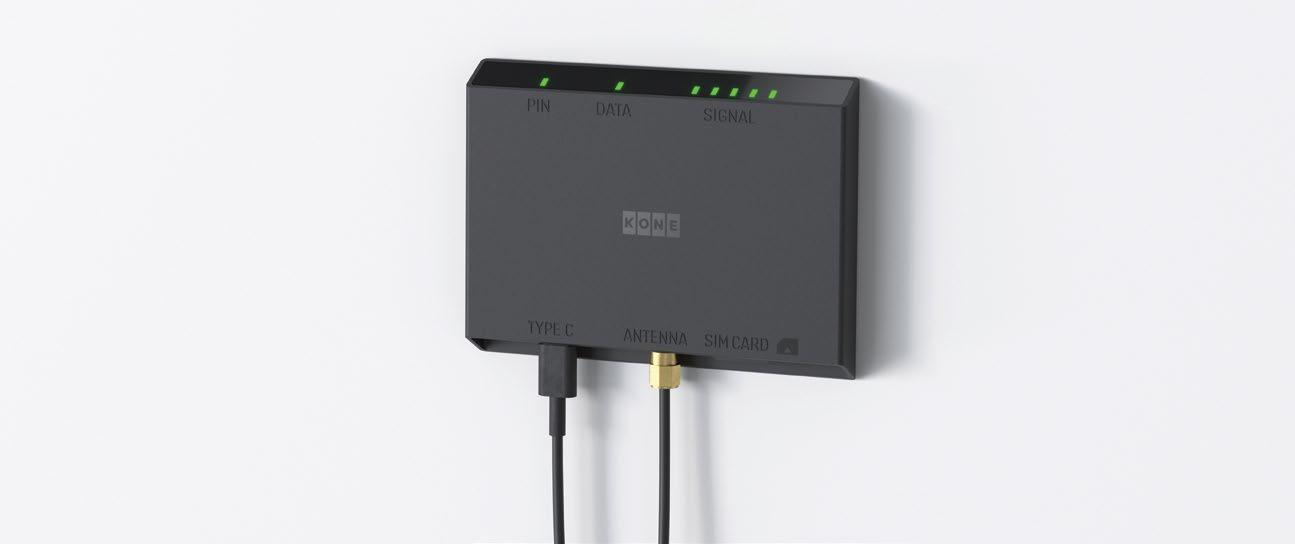
stays connected to the KONE cloud service round-the-clock, improving passenger safety and comfort, while ensuring reliable assistance in an emergency.
A wide range of KONE designs and innovations have been recognised,
with more than 40 Red Dot awards over the years. Examples of previous winners include the landmark KONE DX Class digital experience elevator, KONE Lane turnstile next-generation access gate system, and KONE I Series elevator interior offering.
